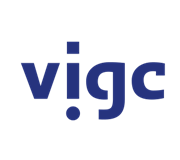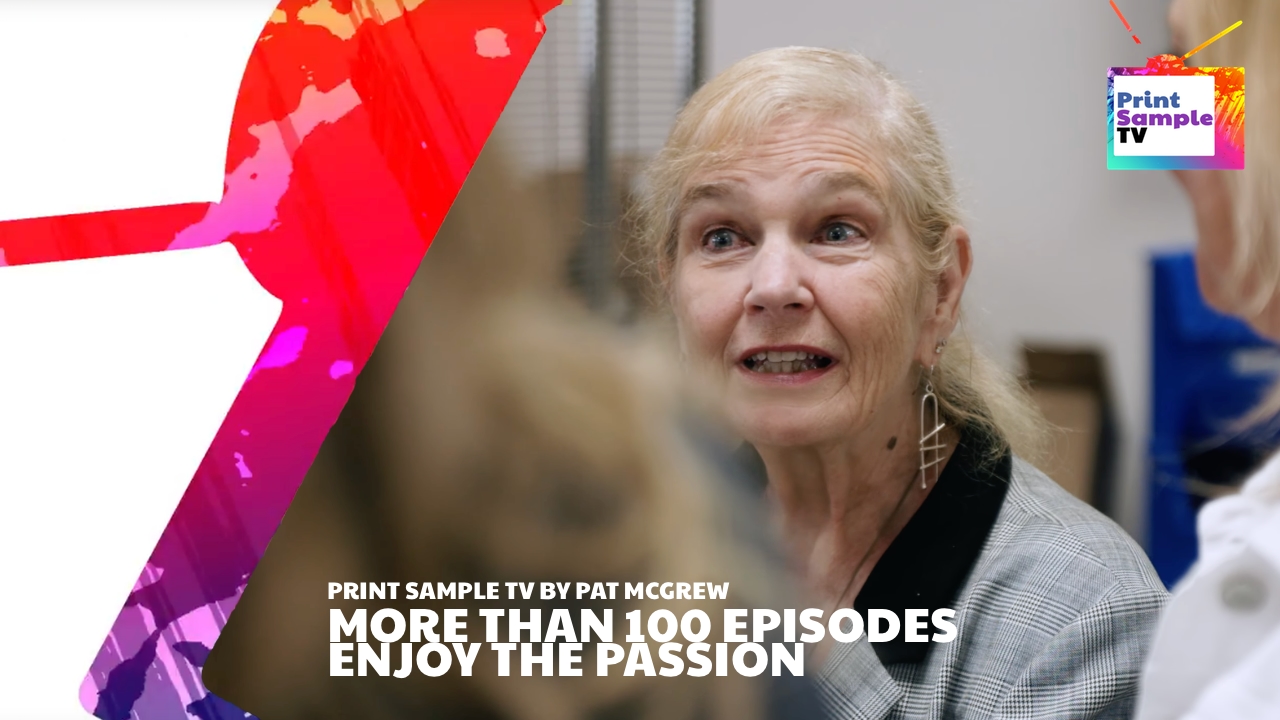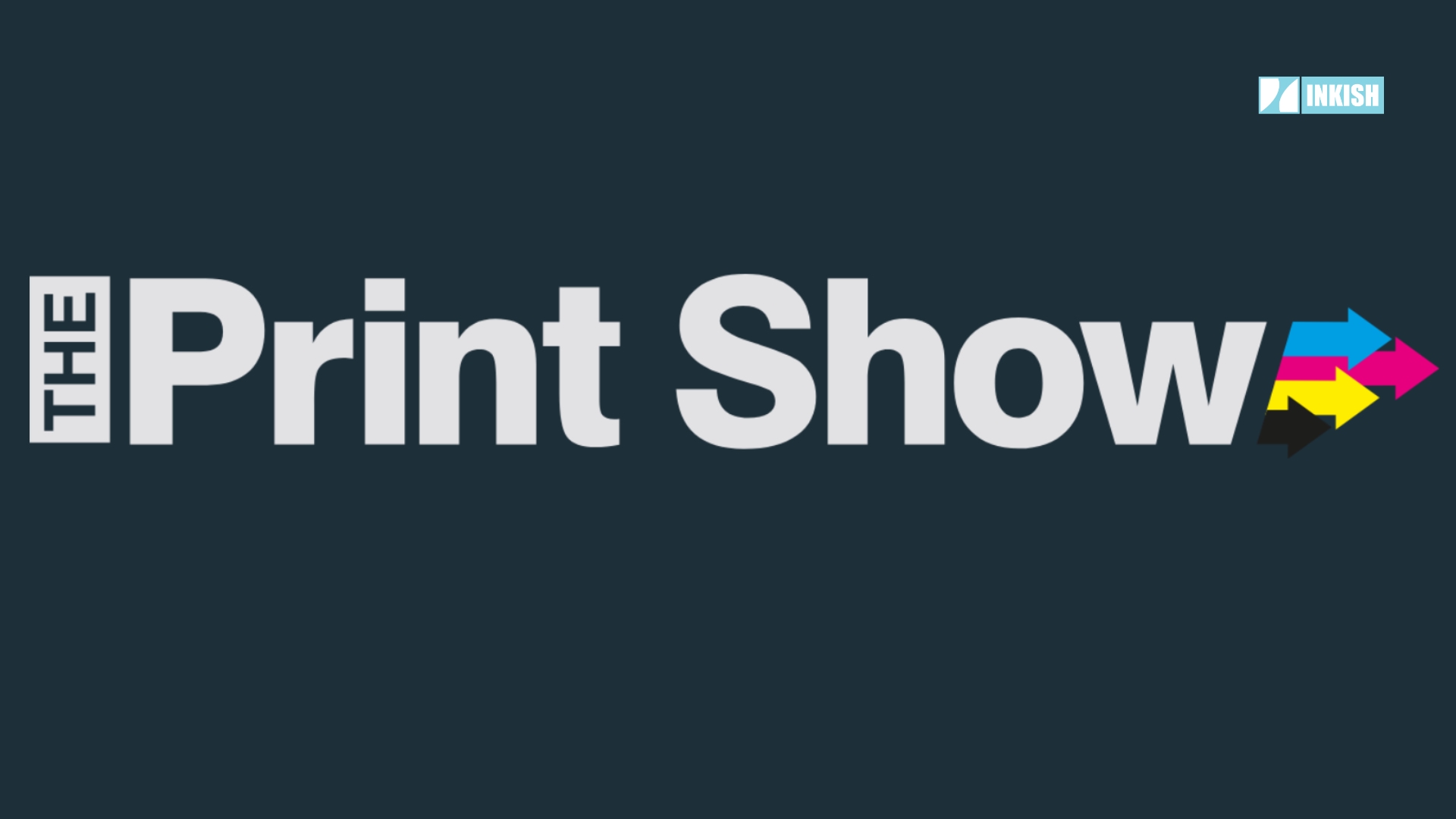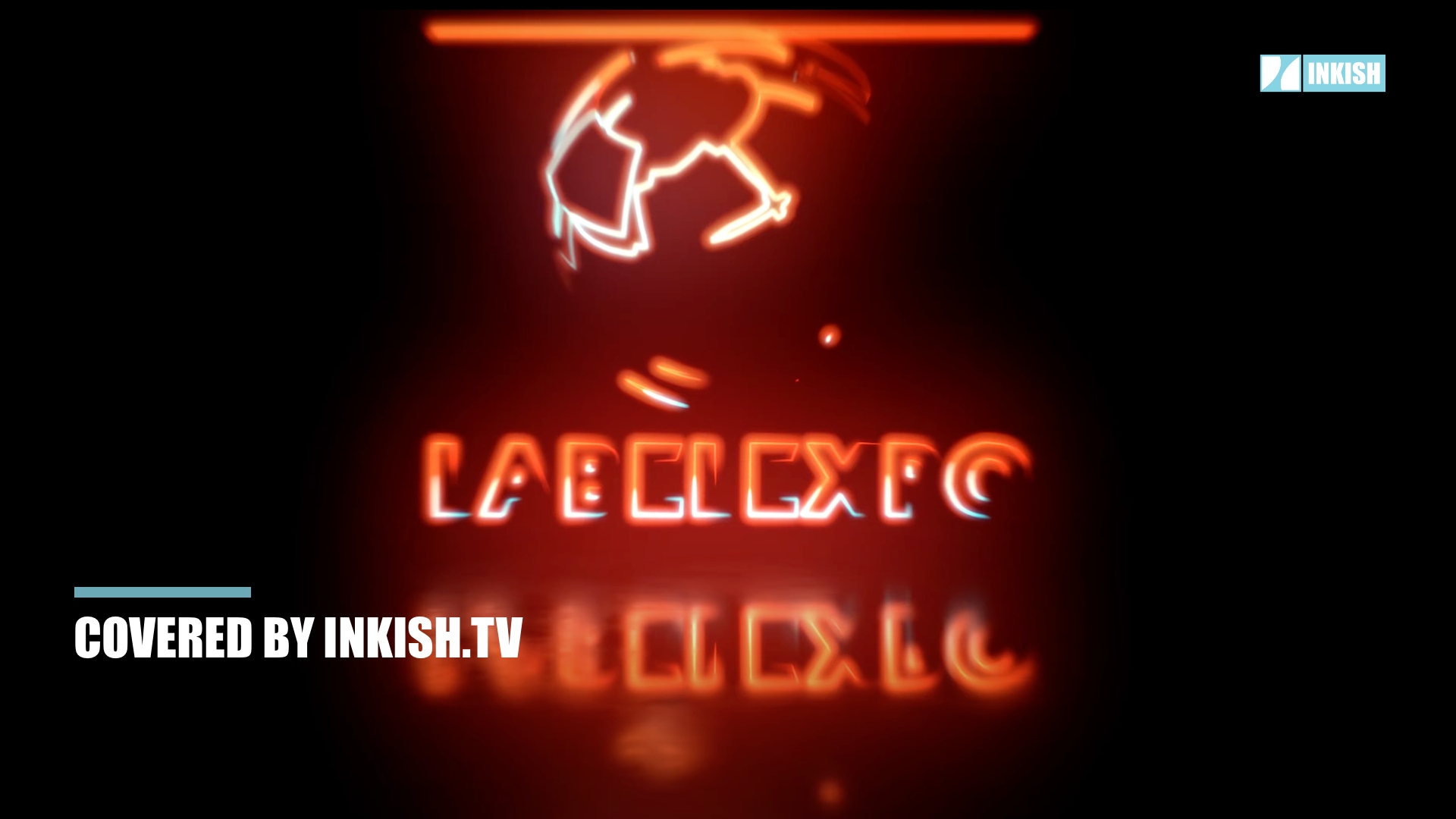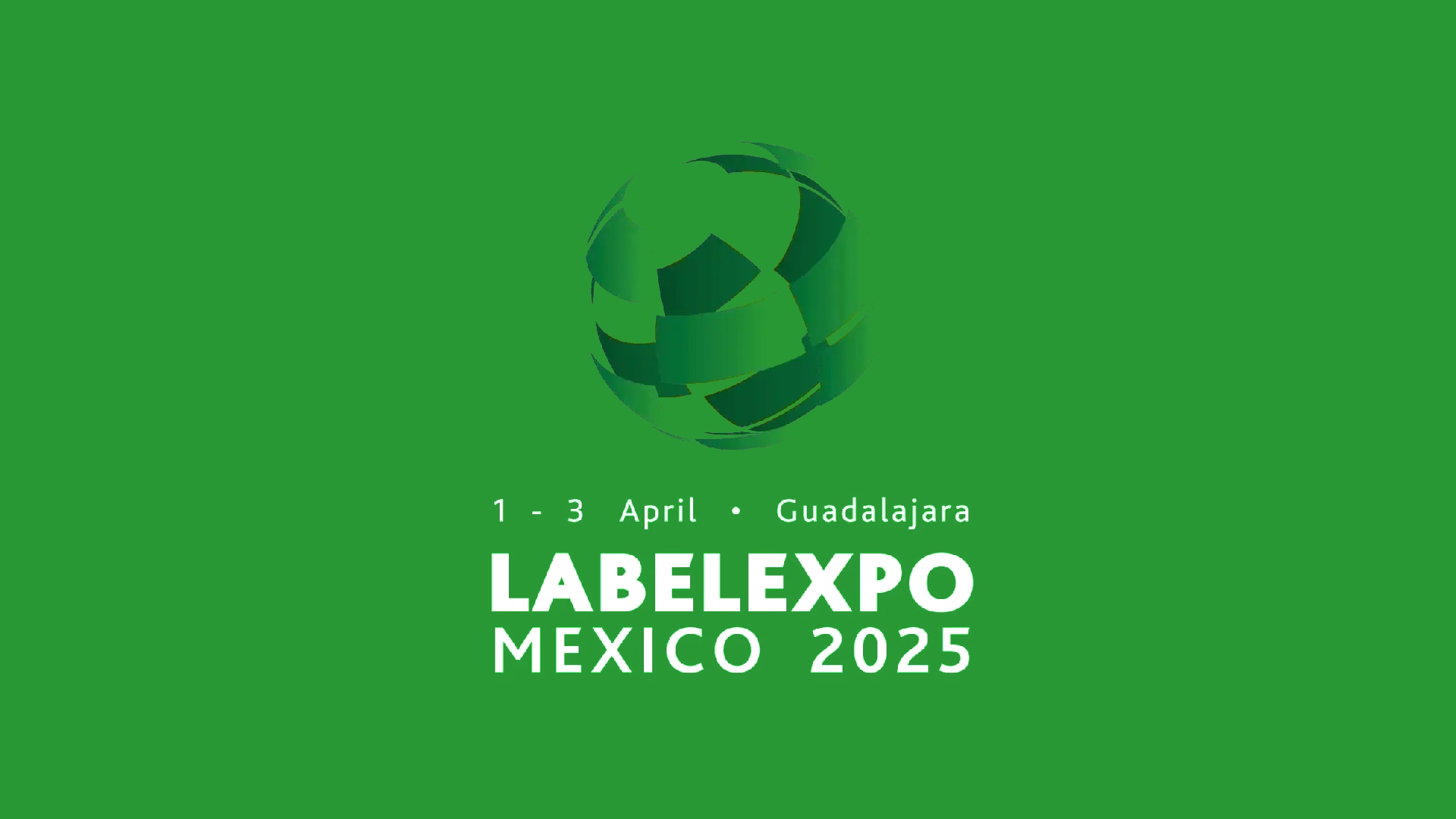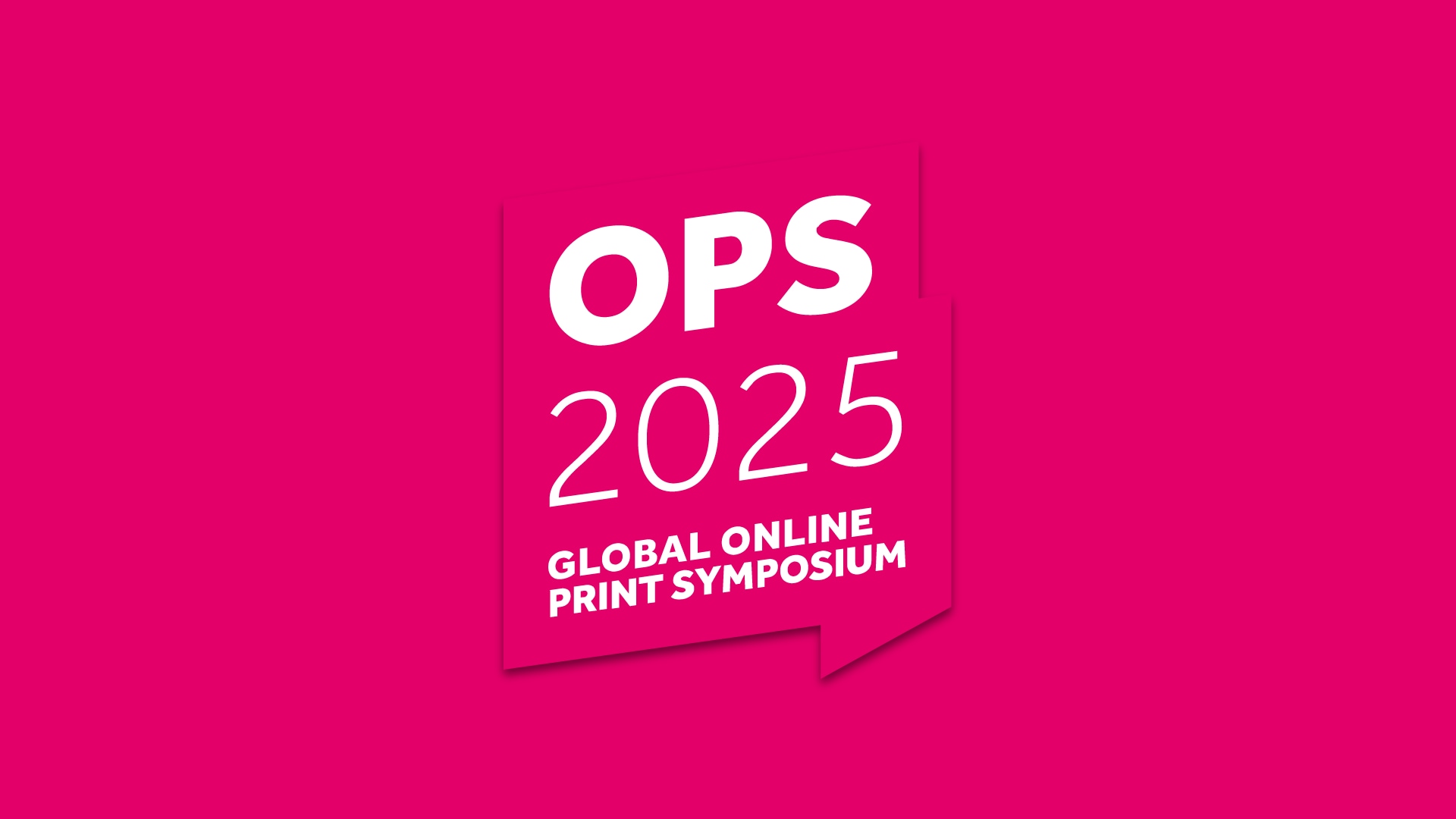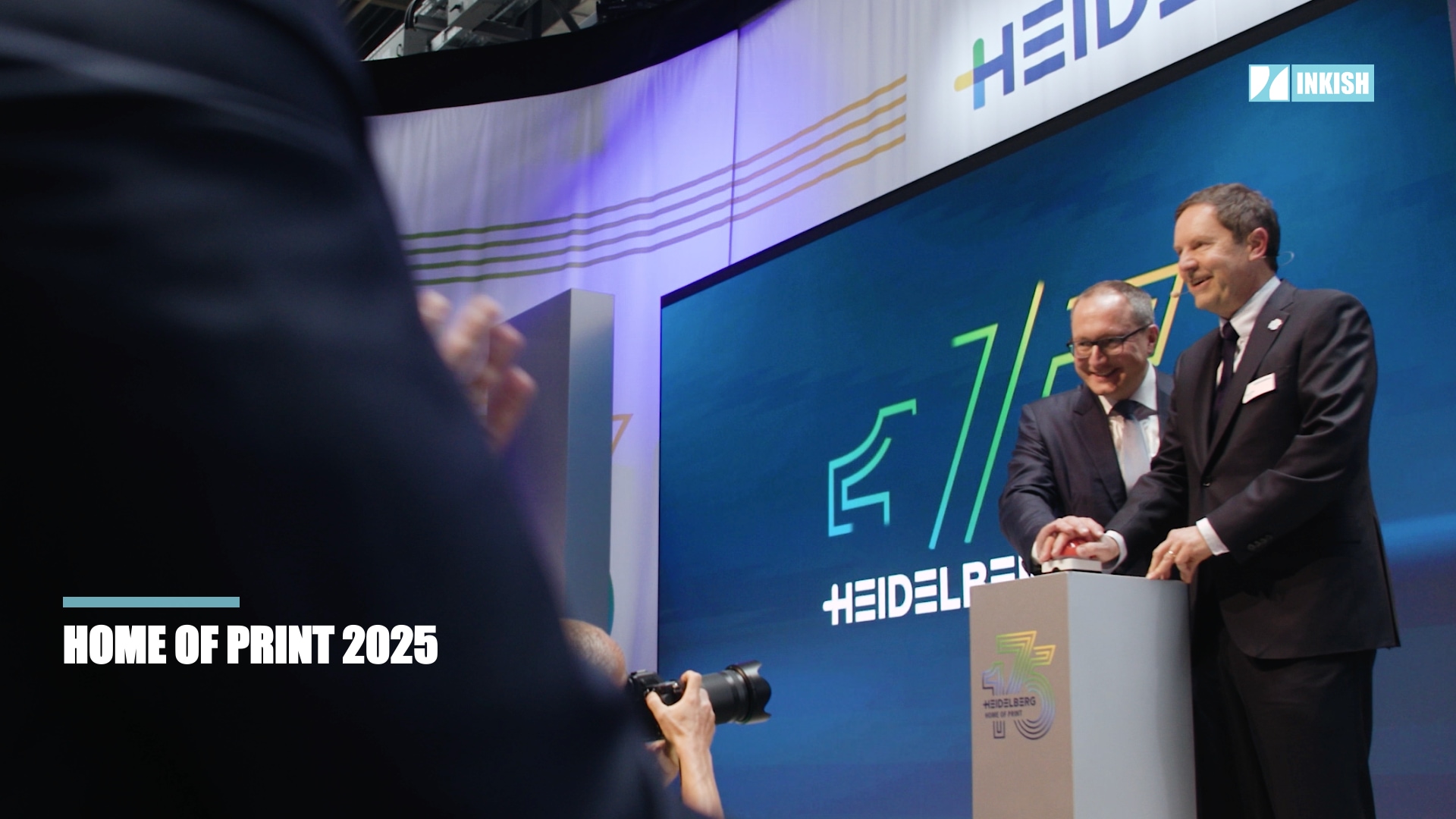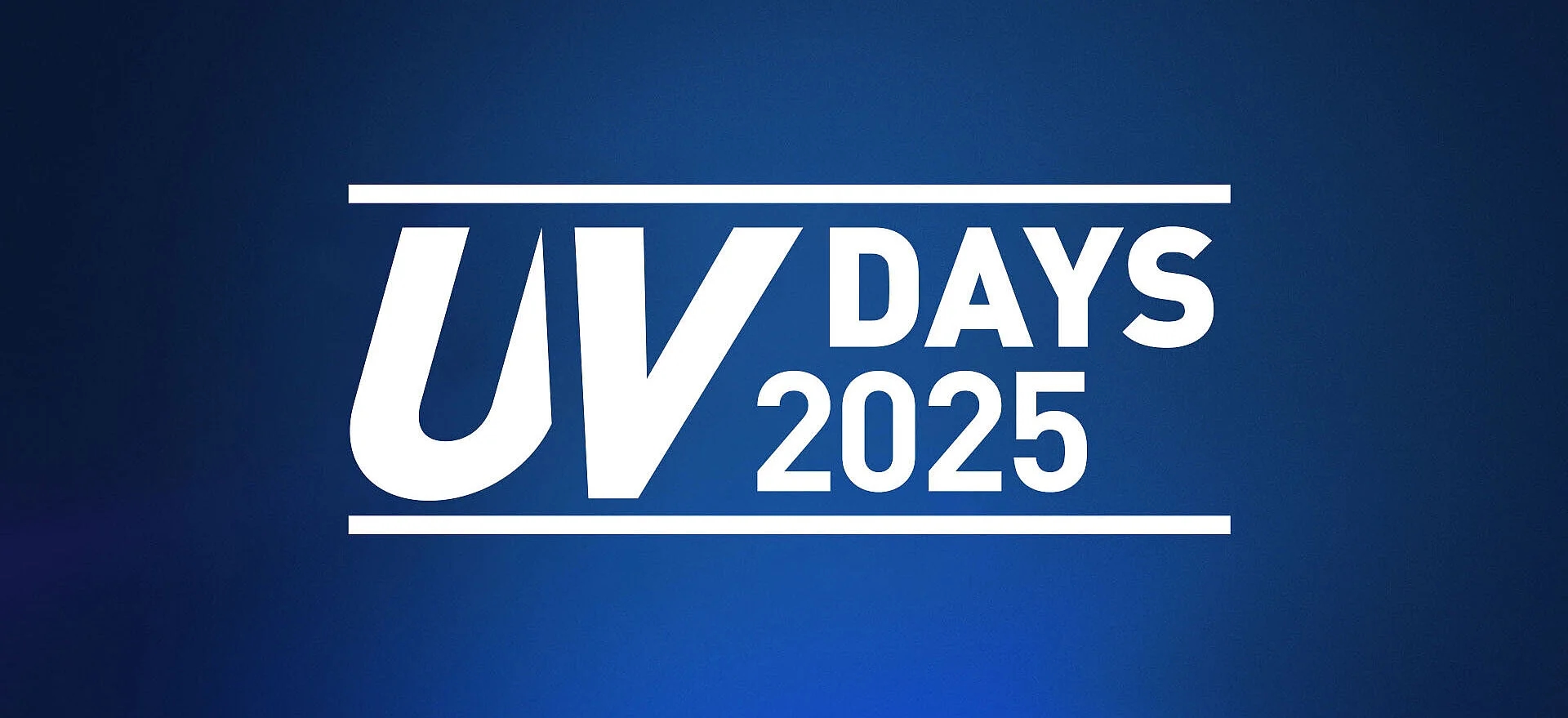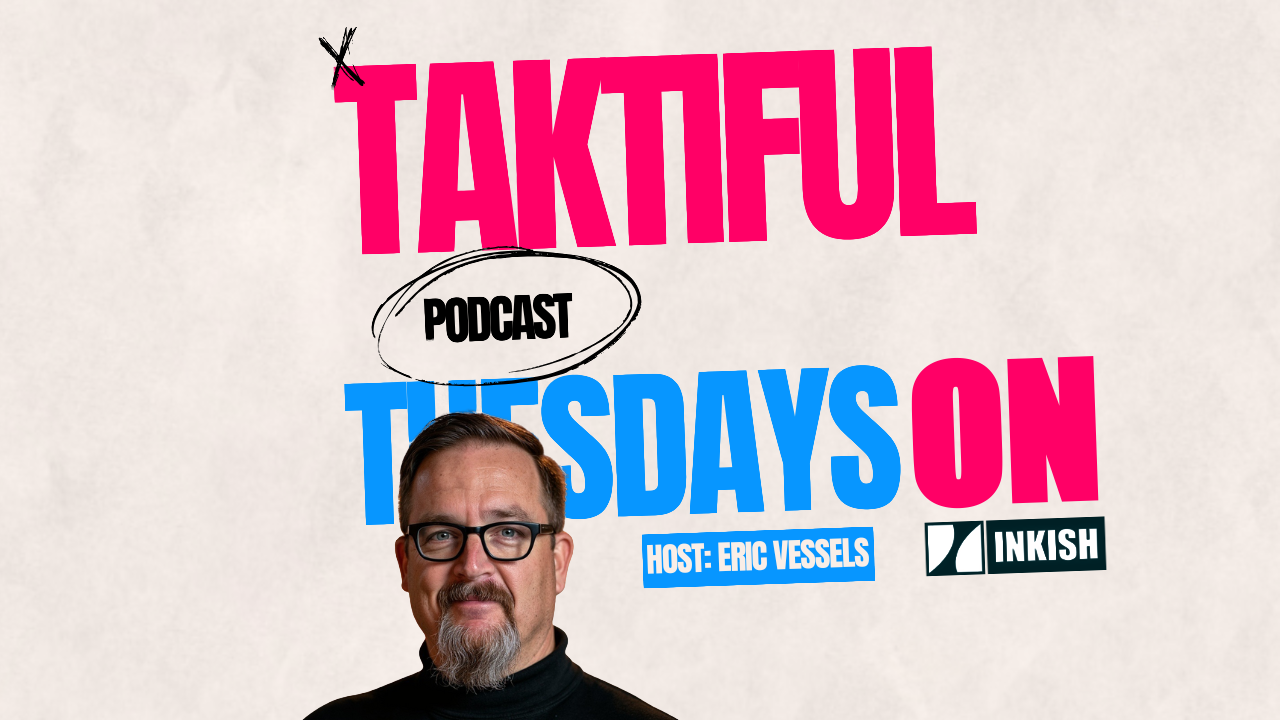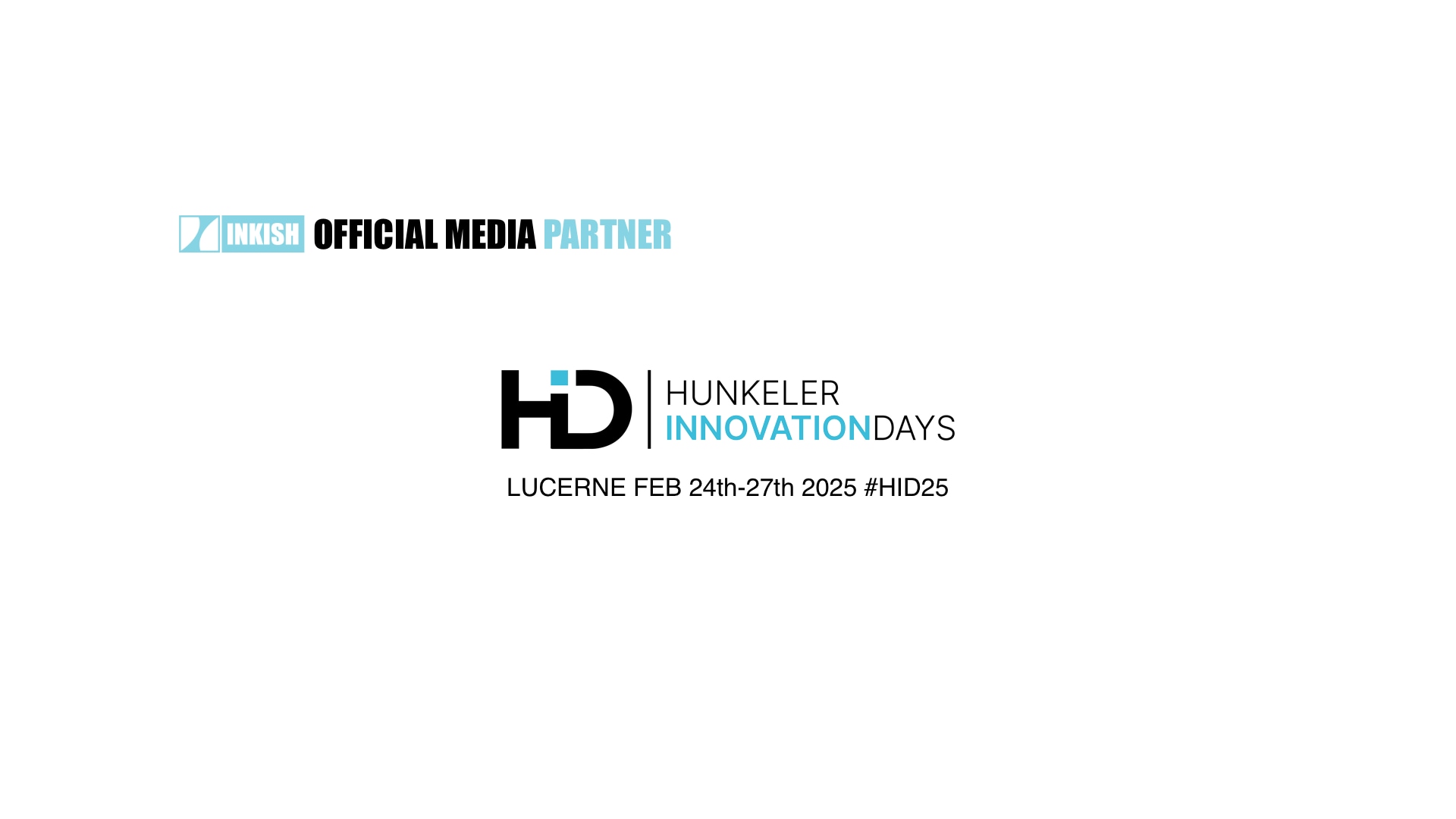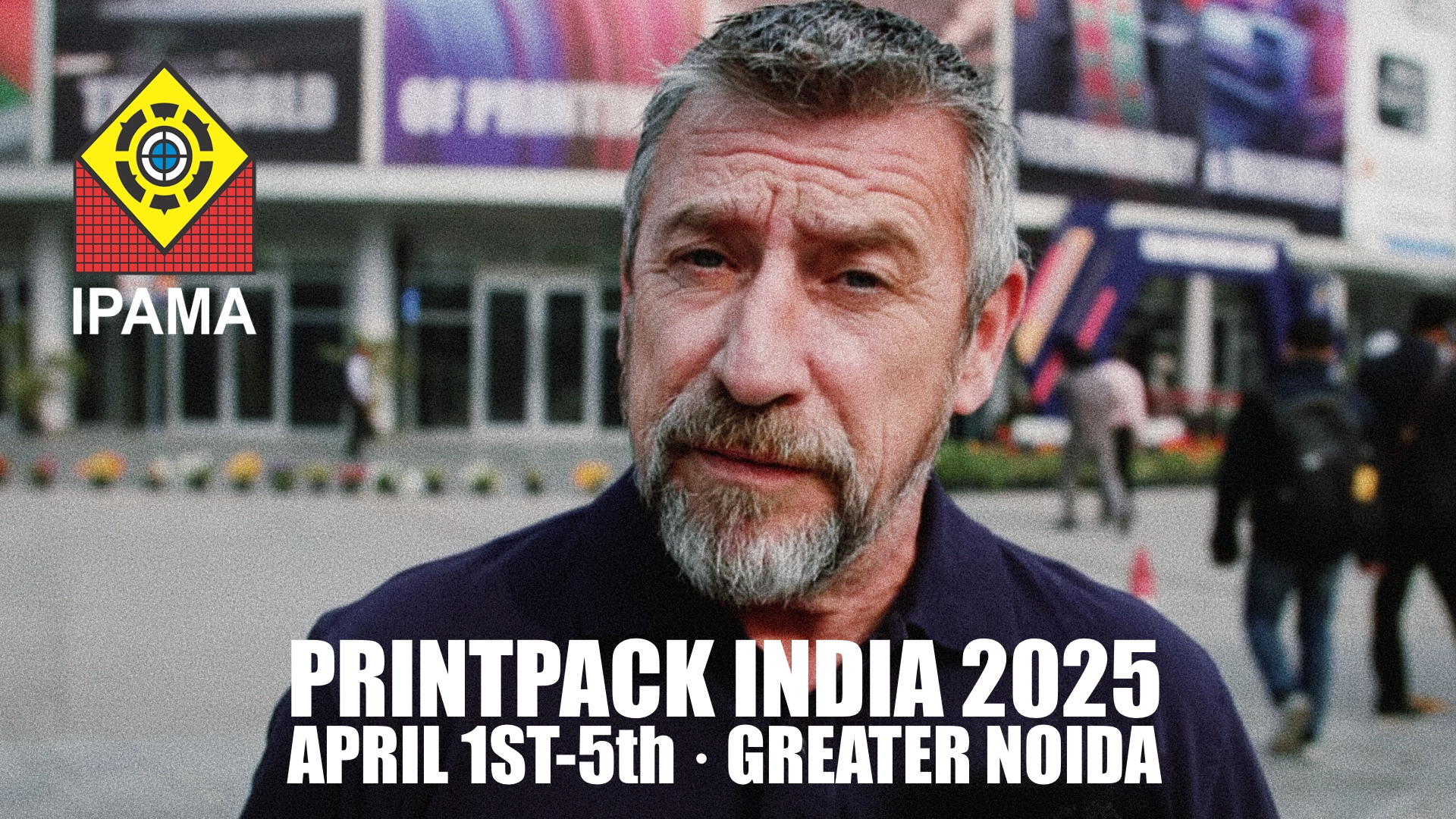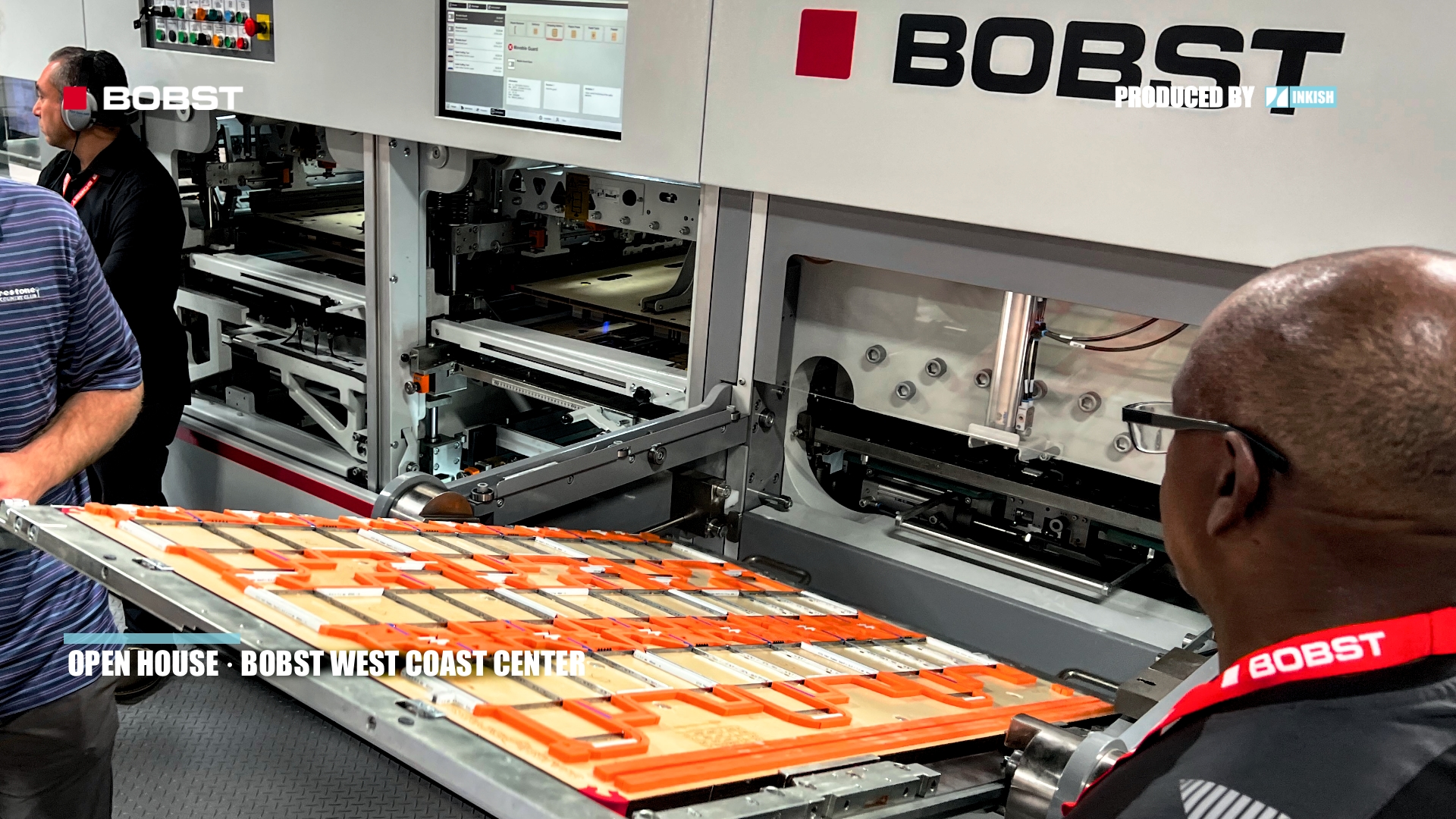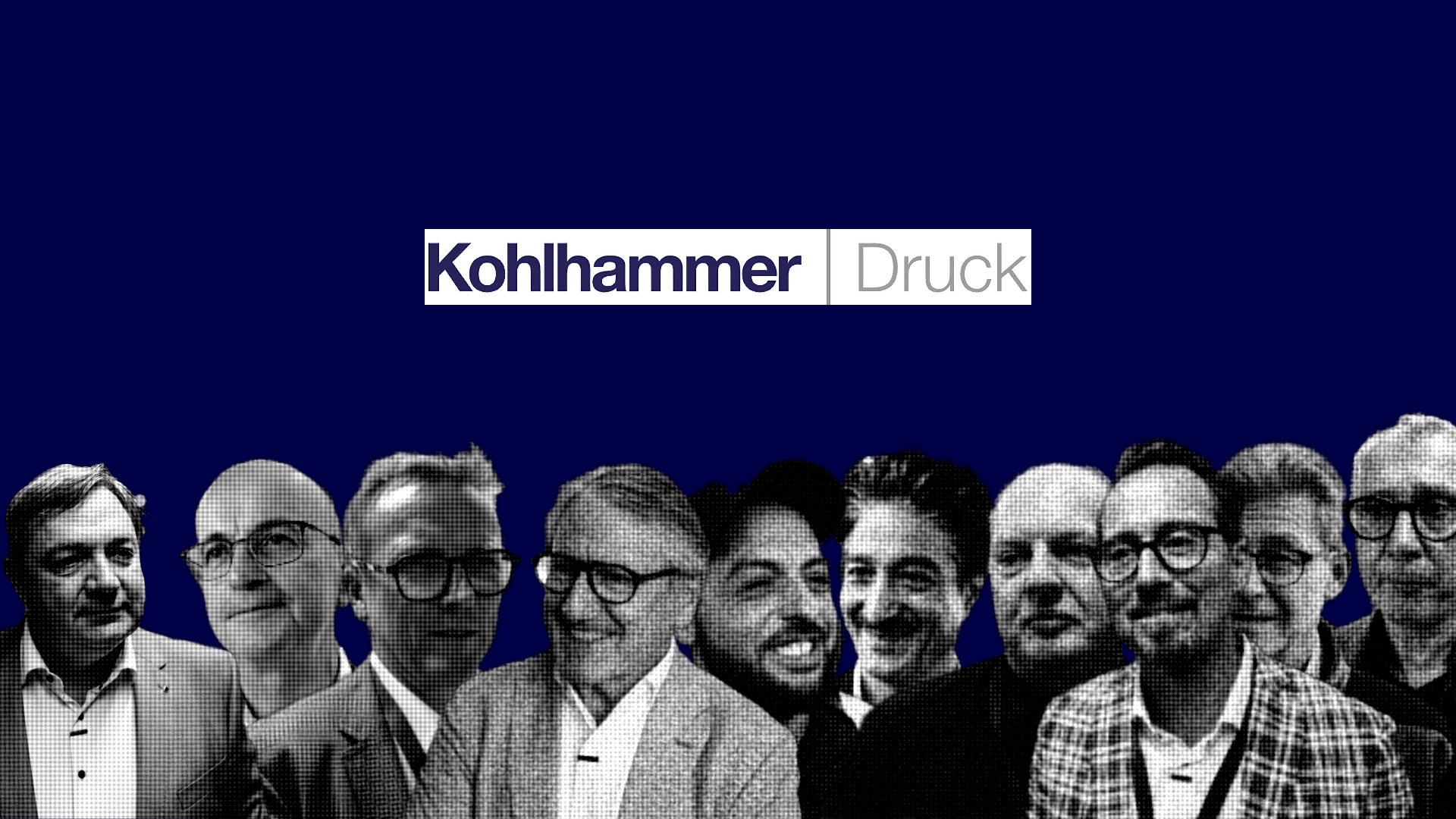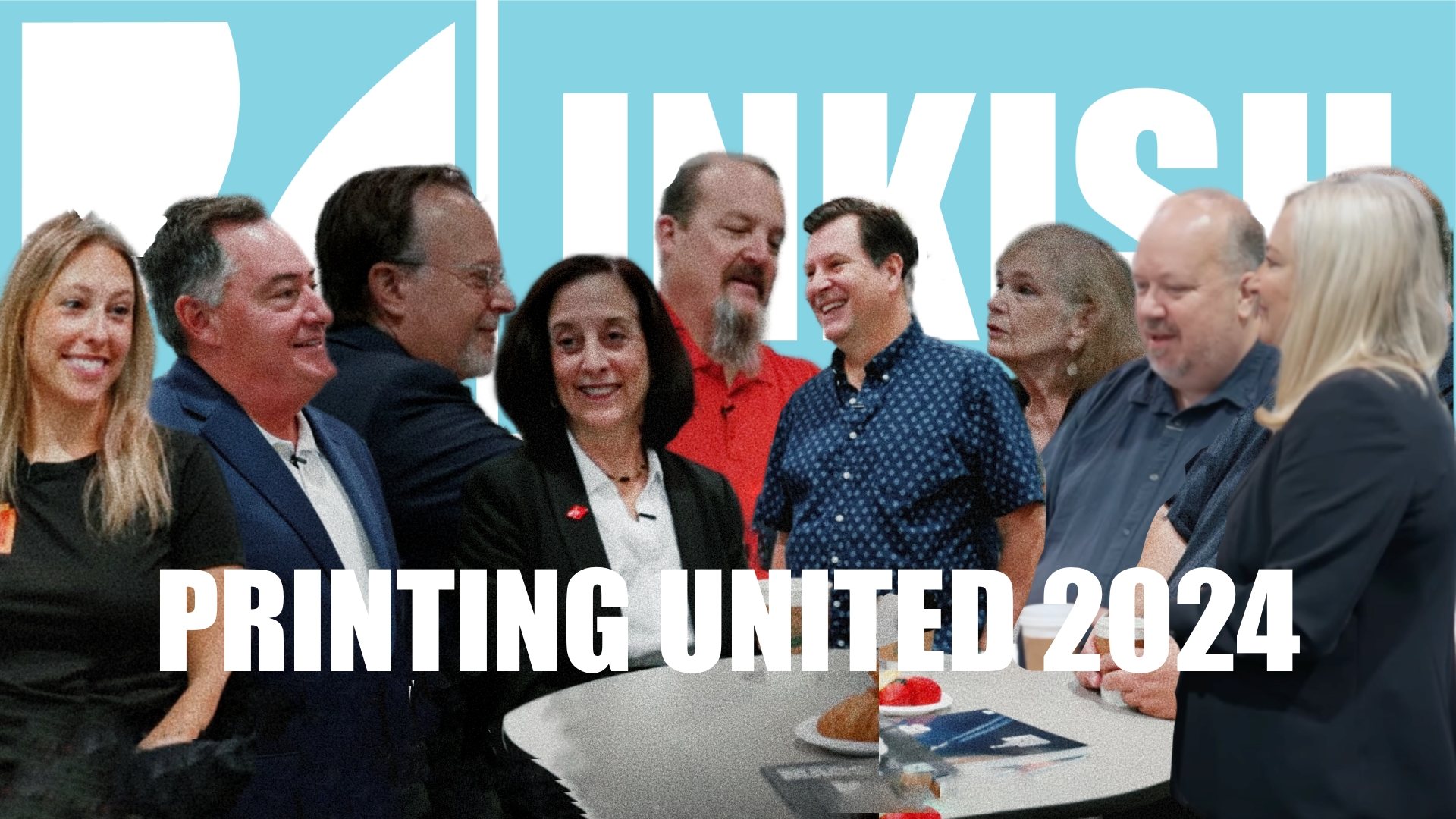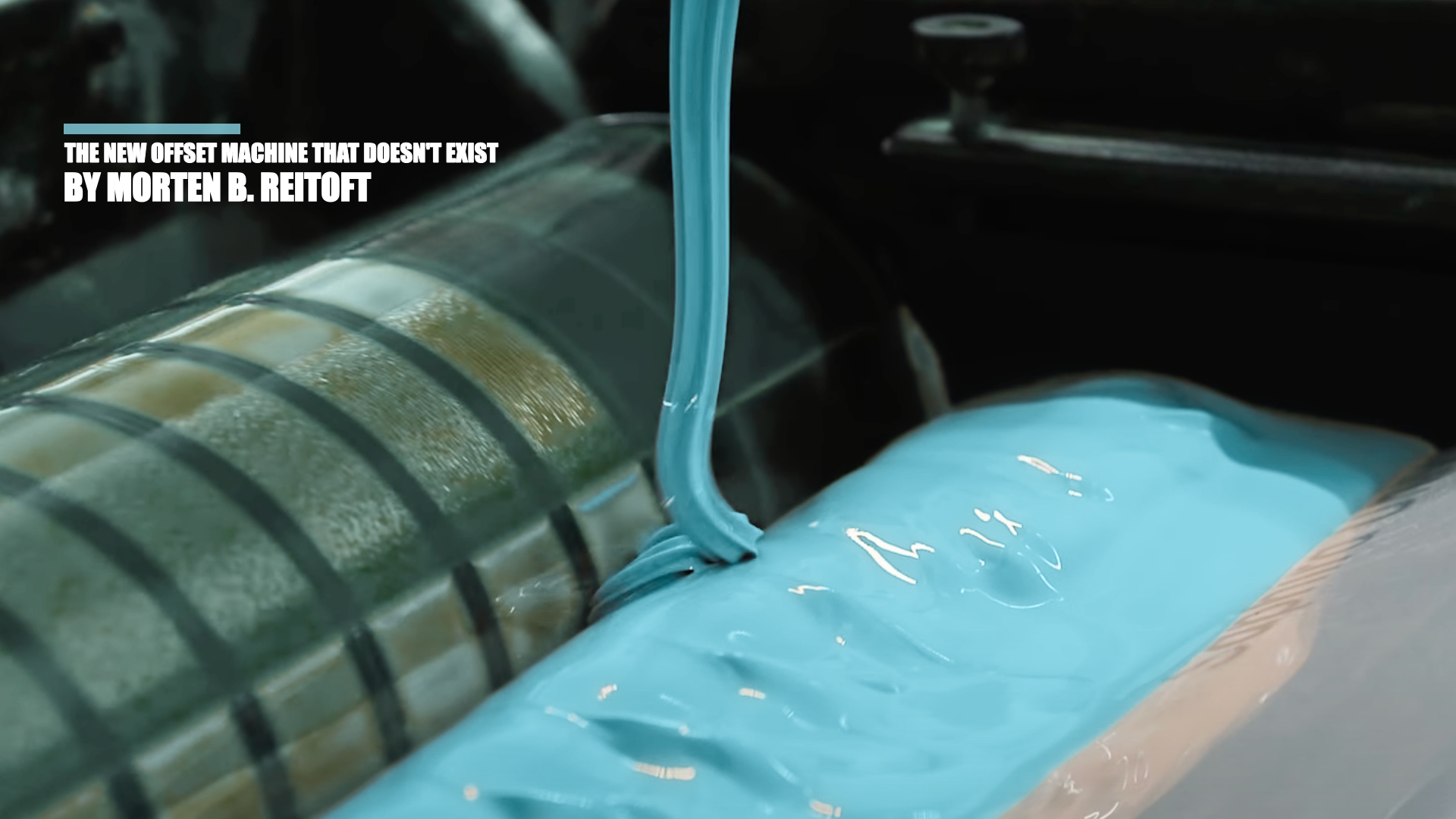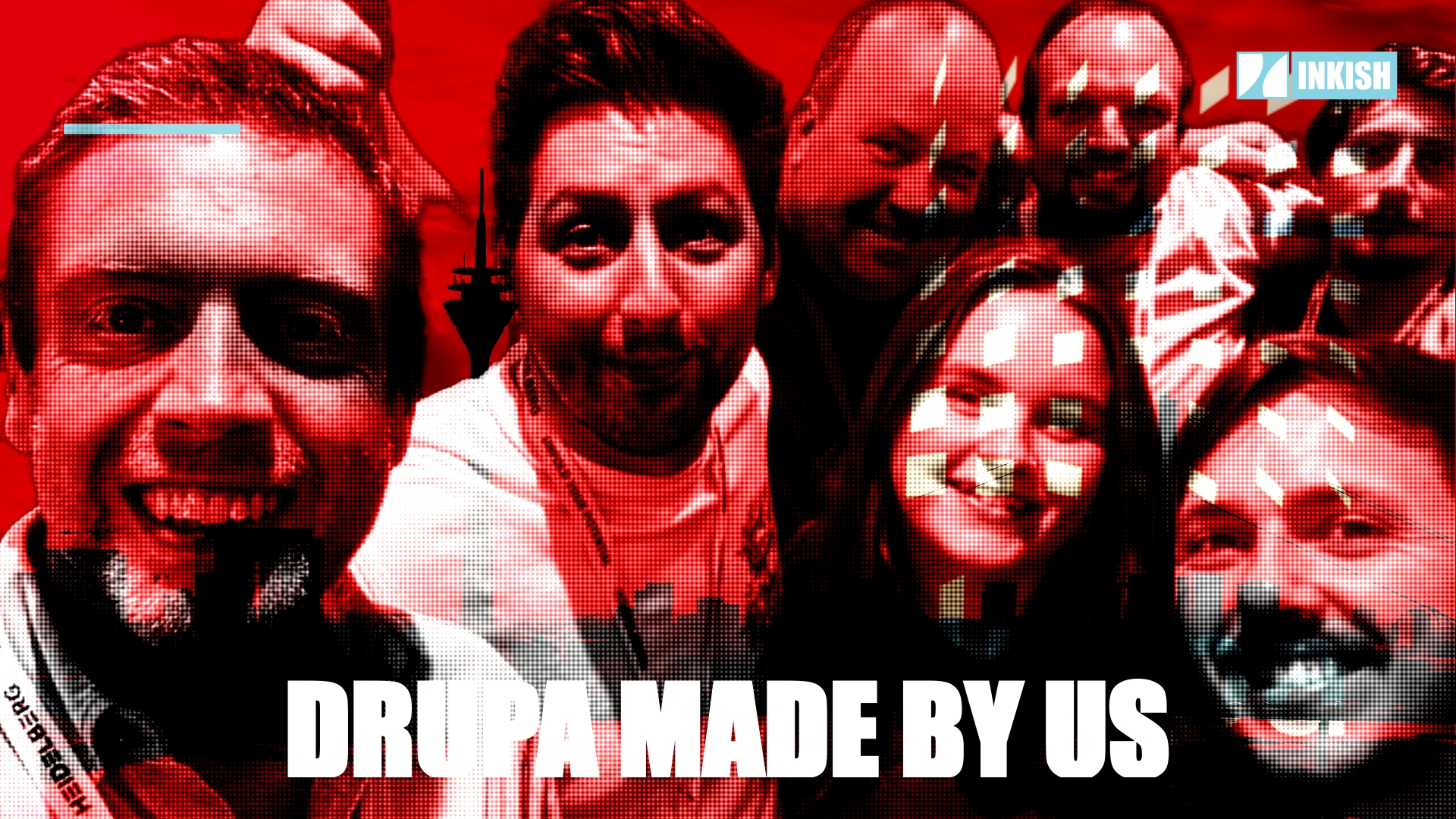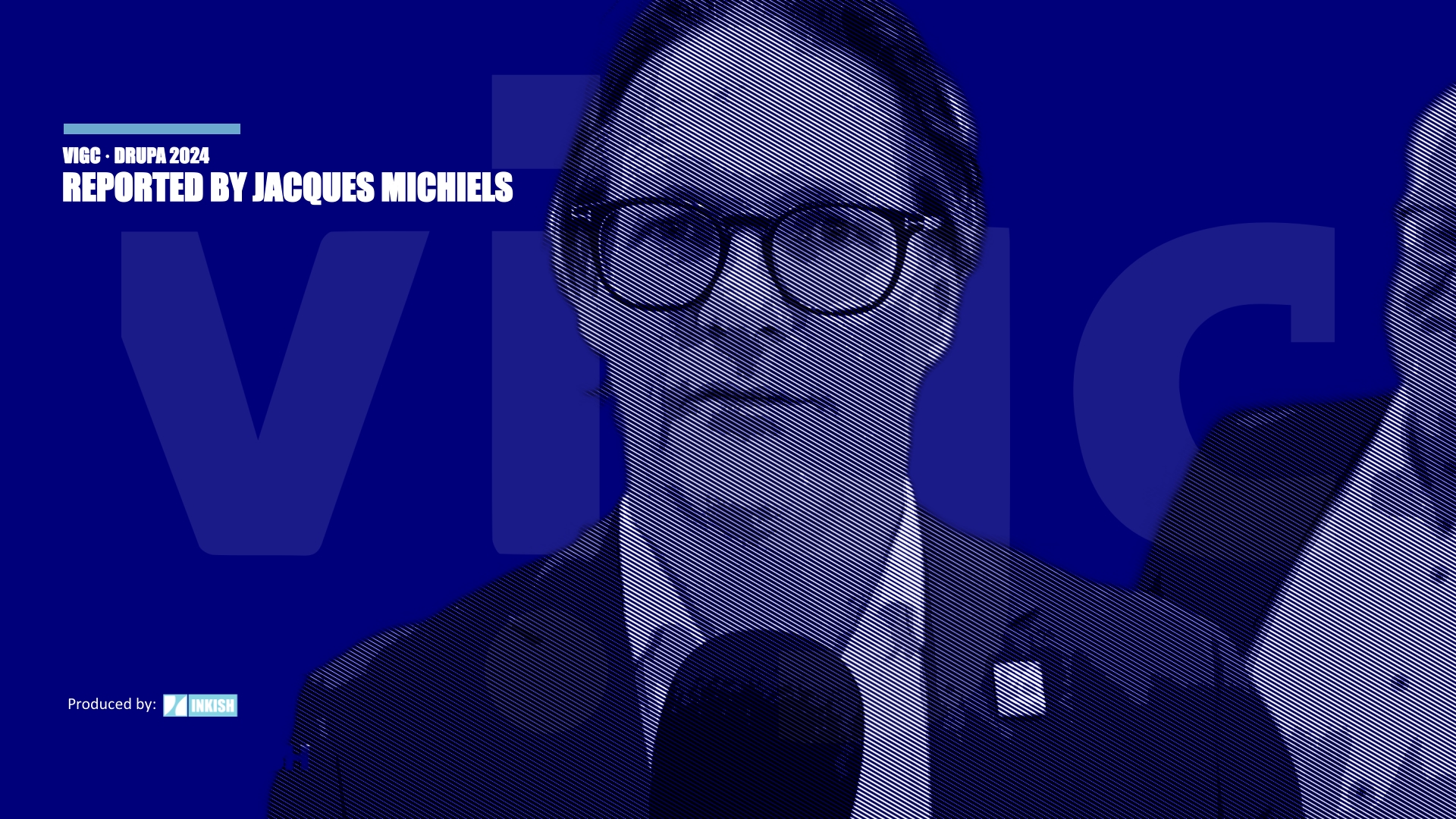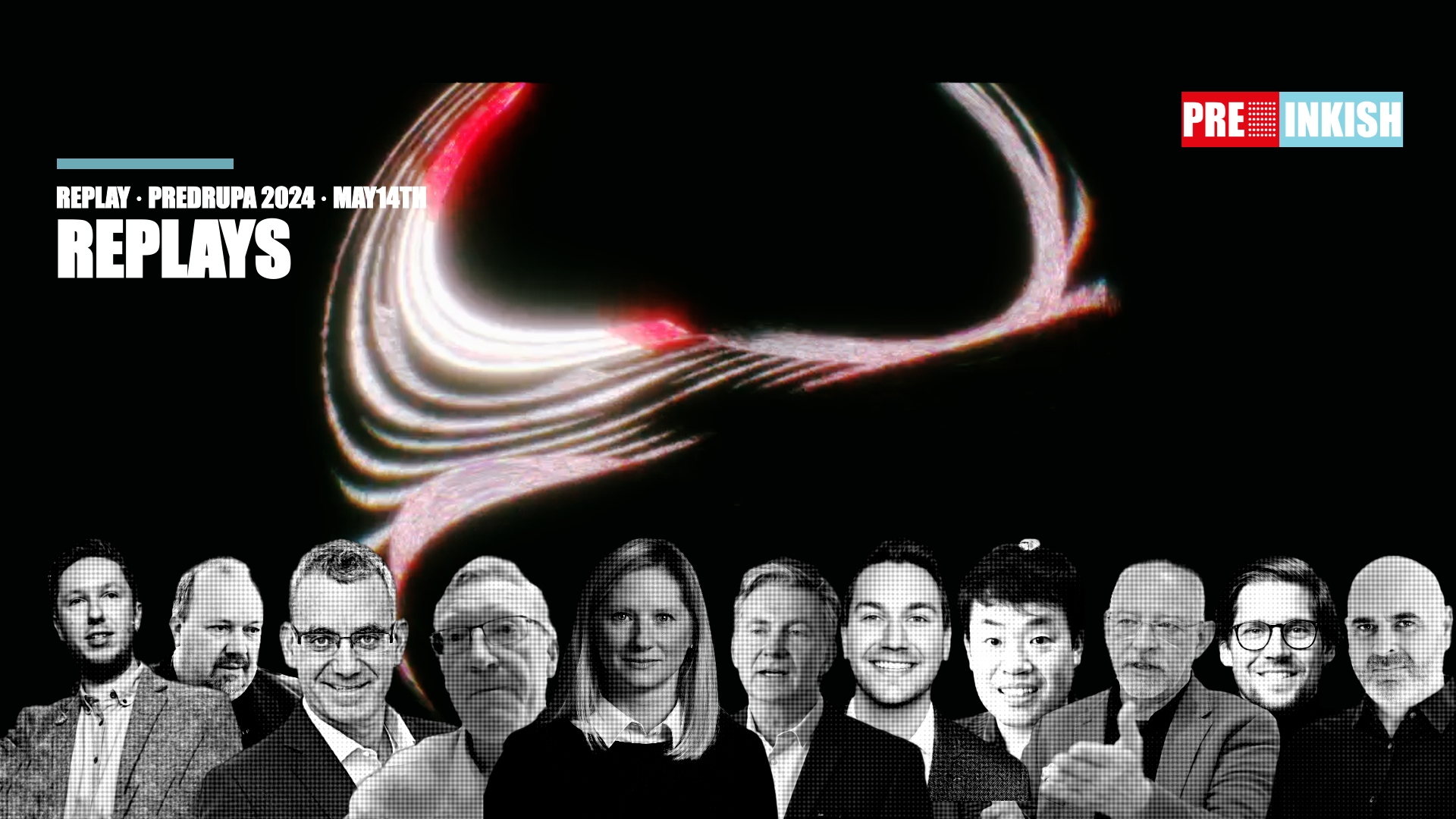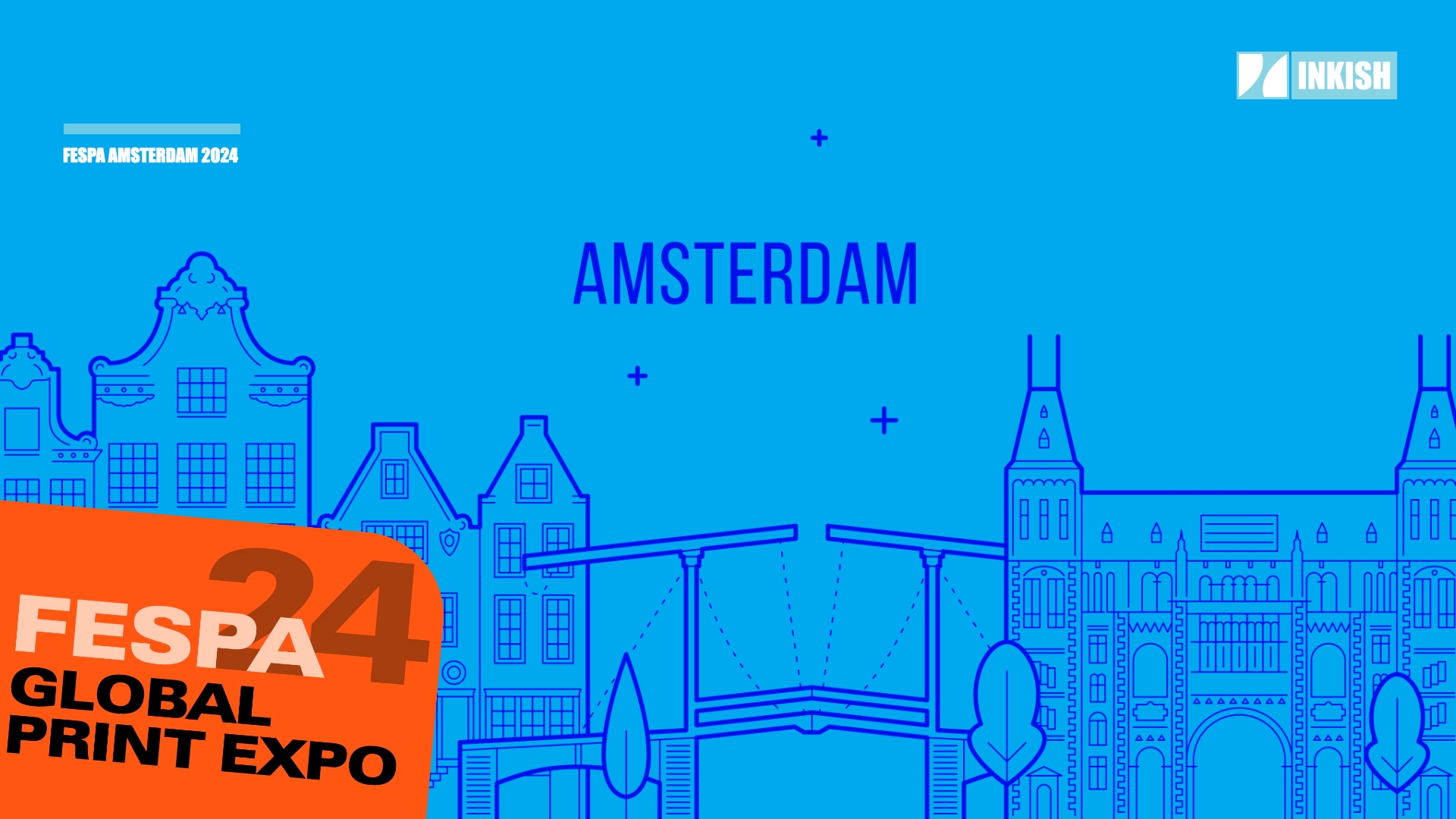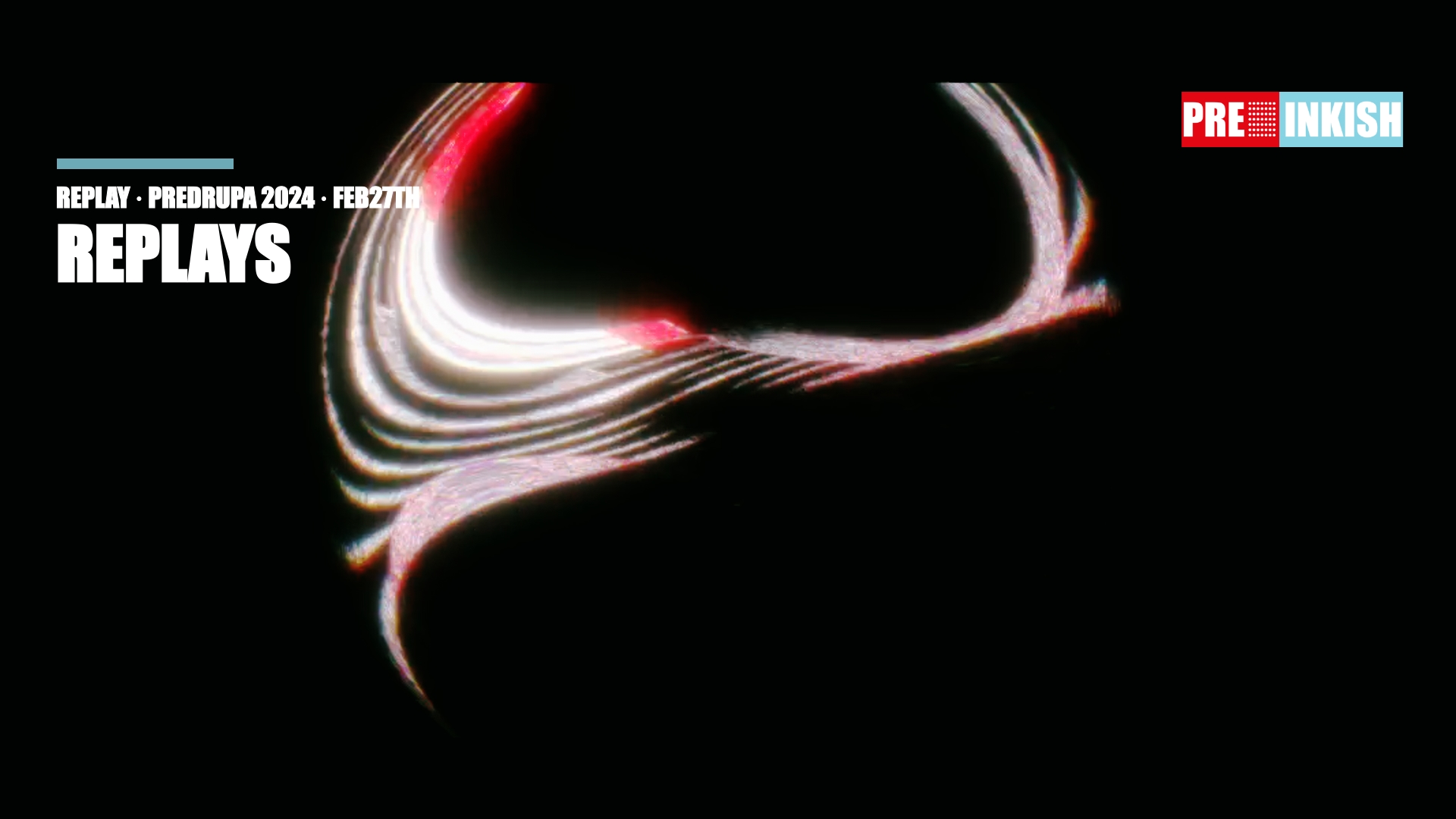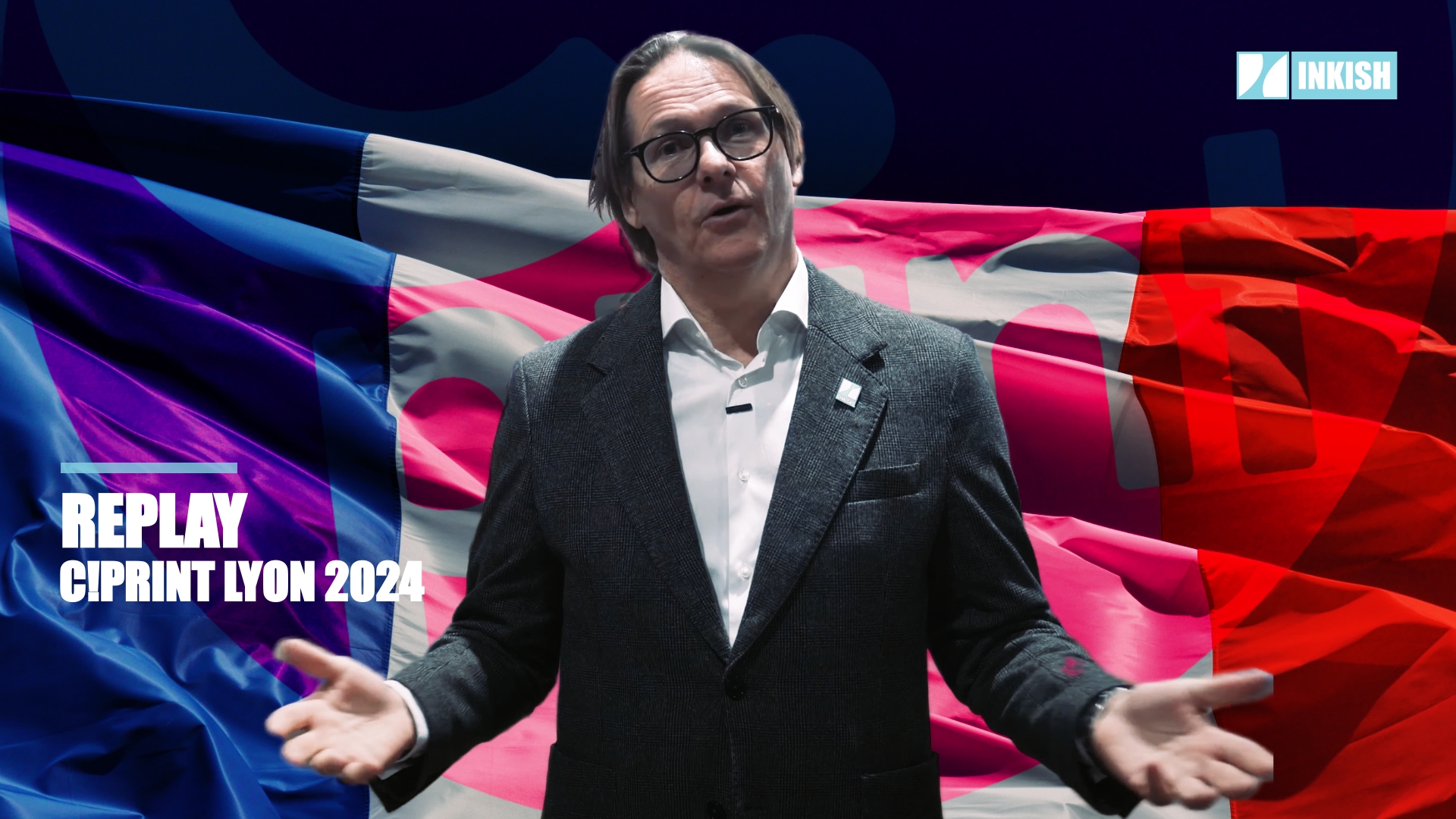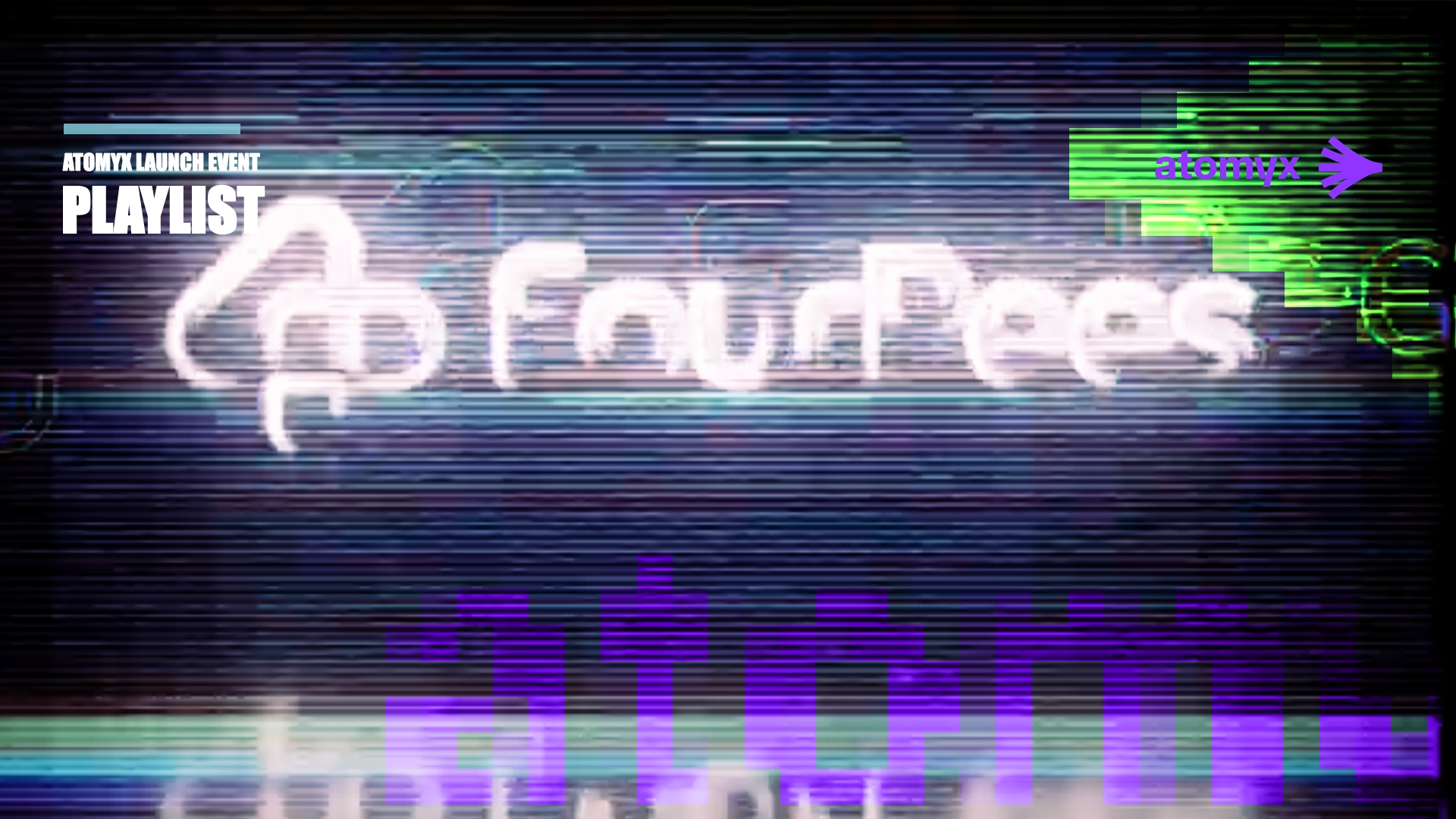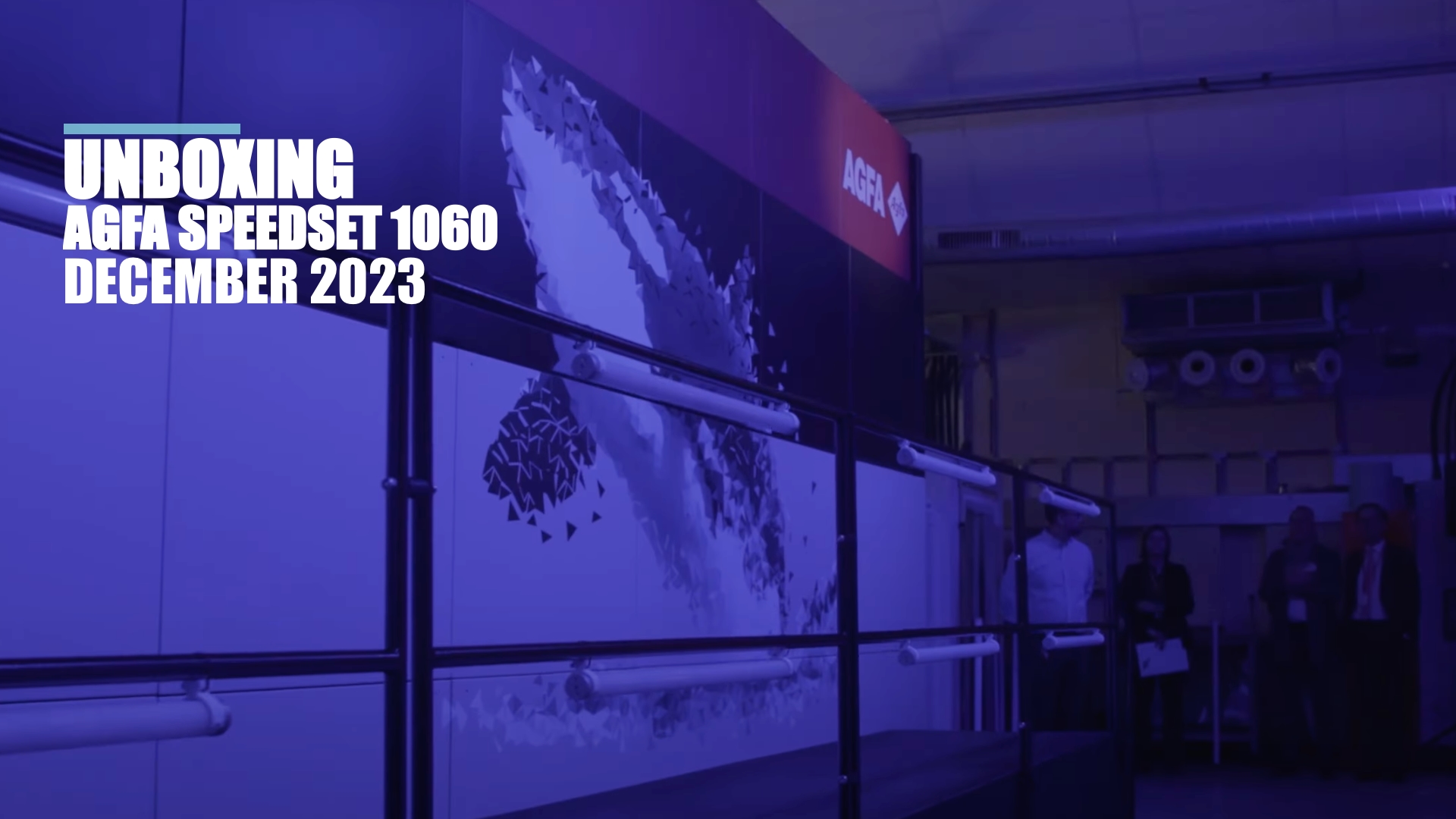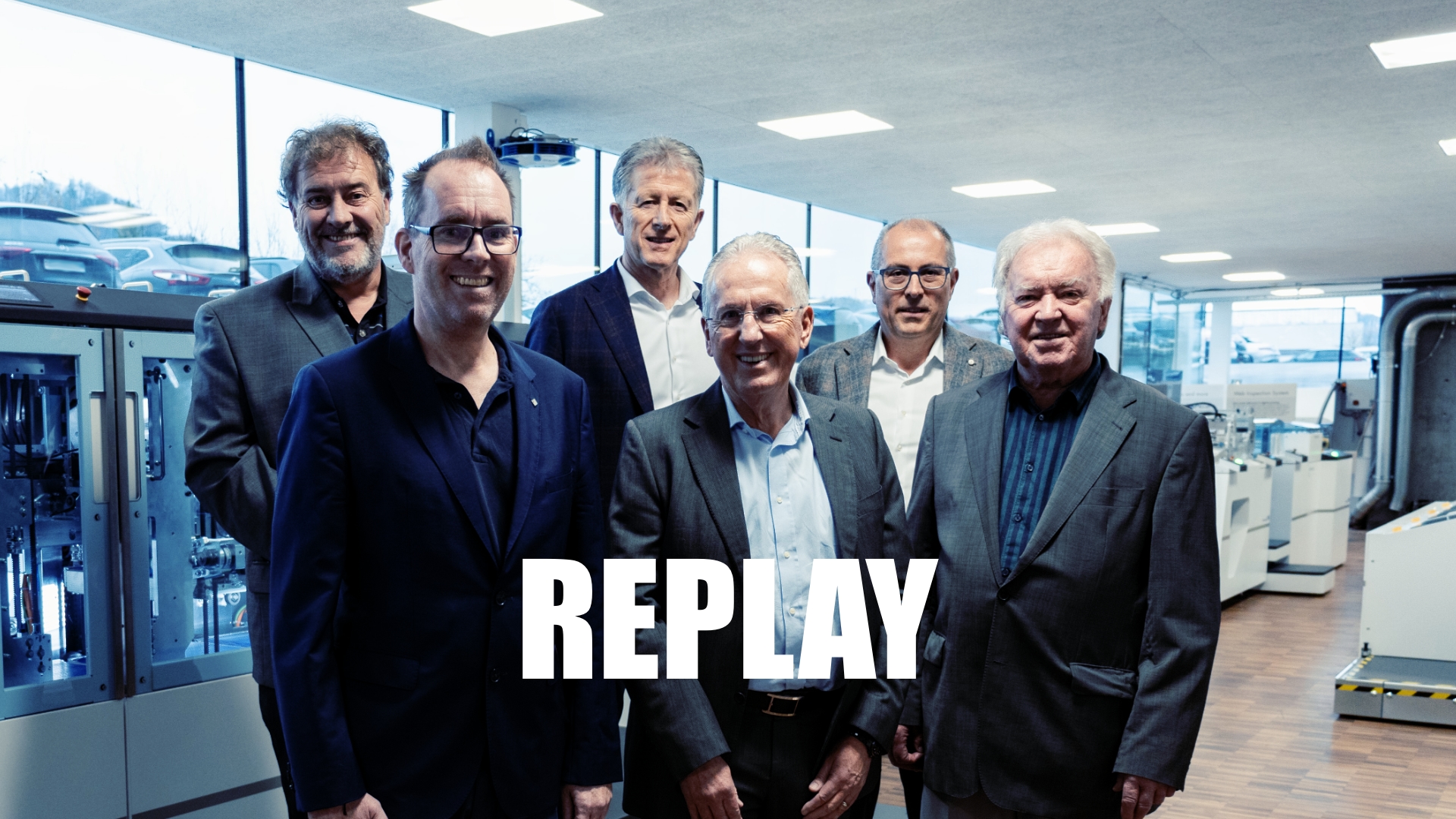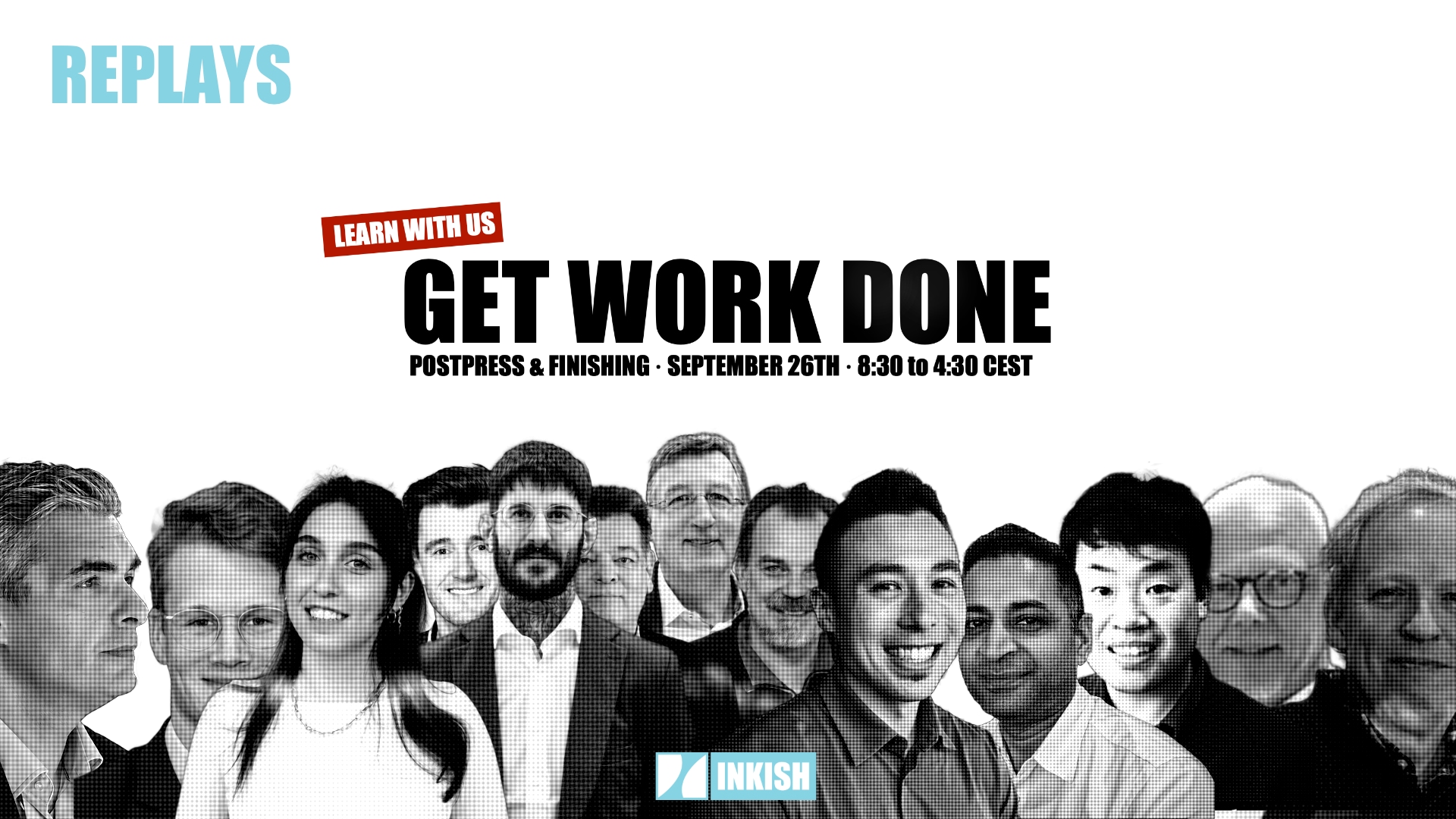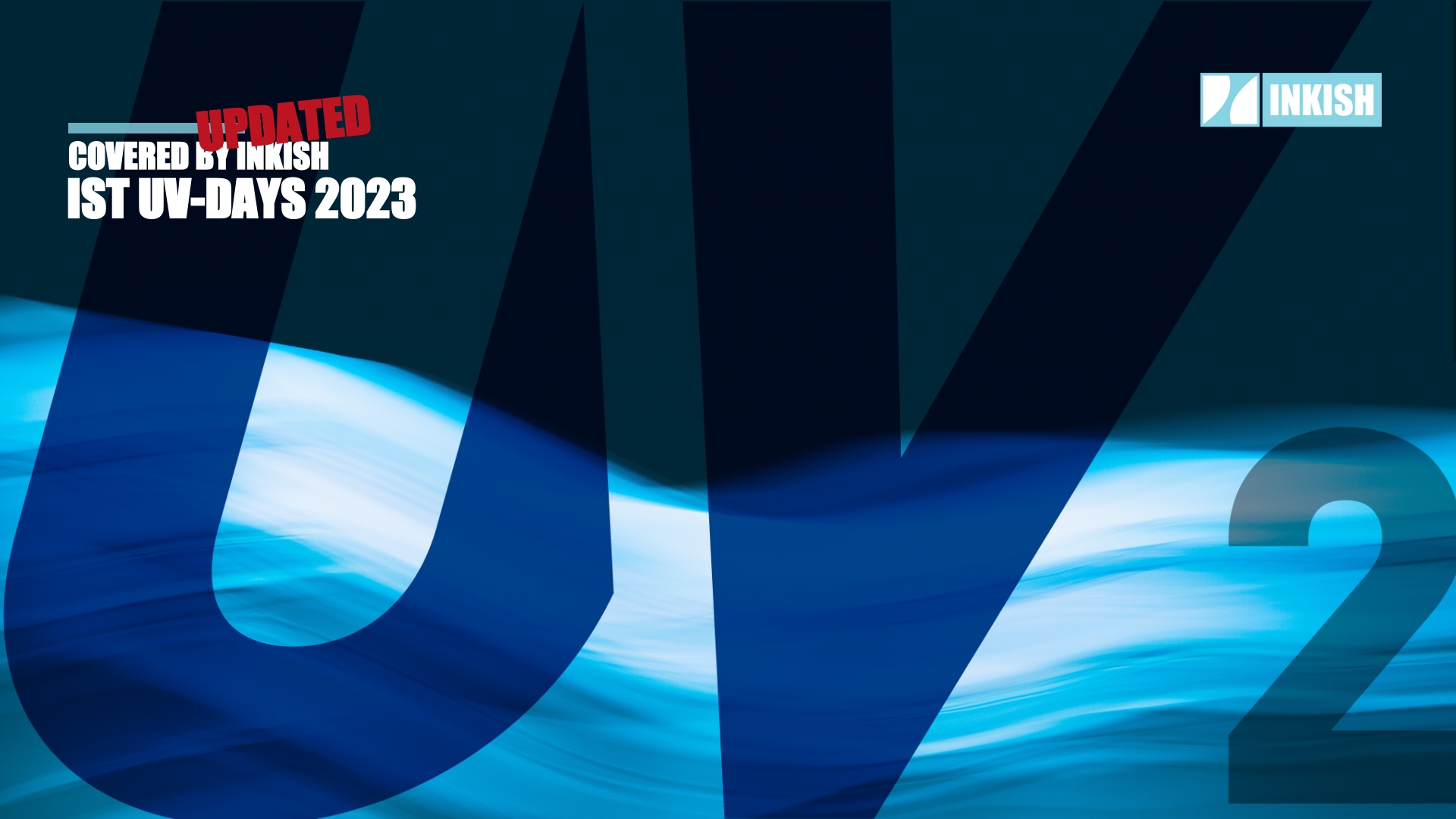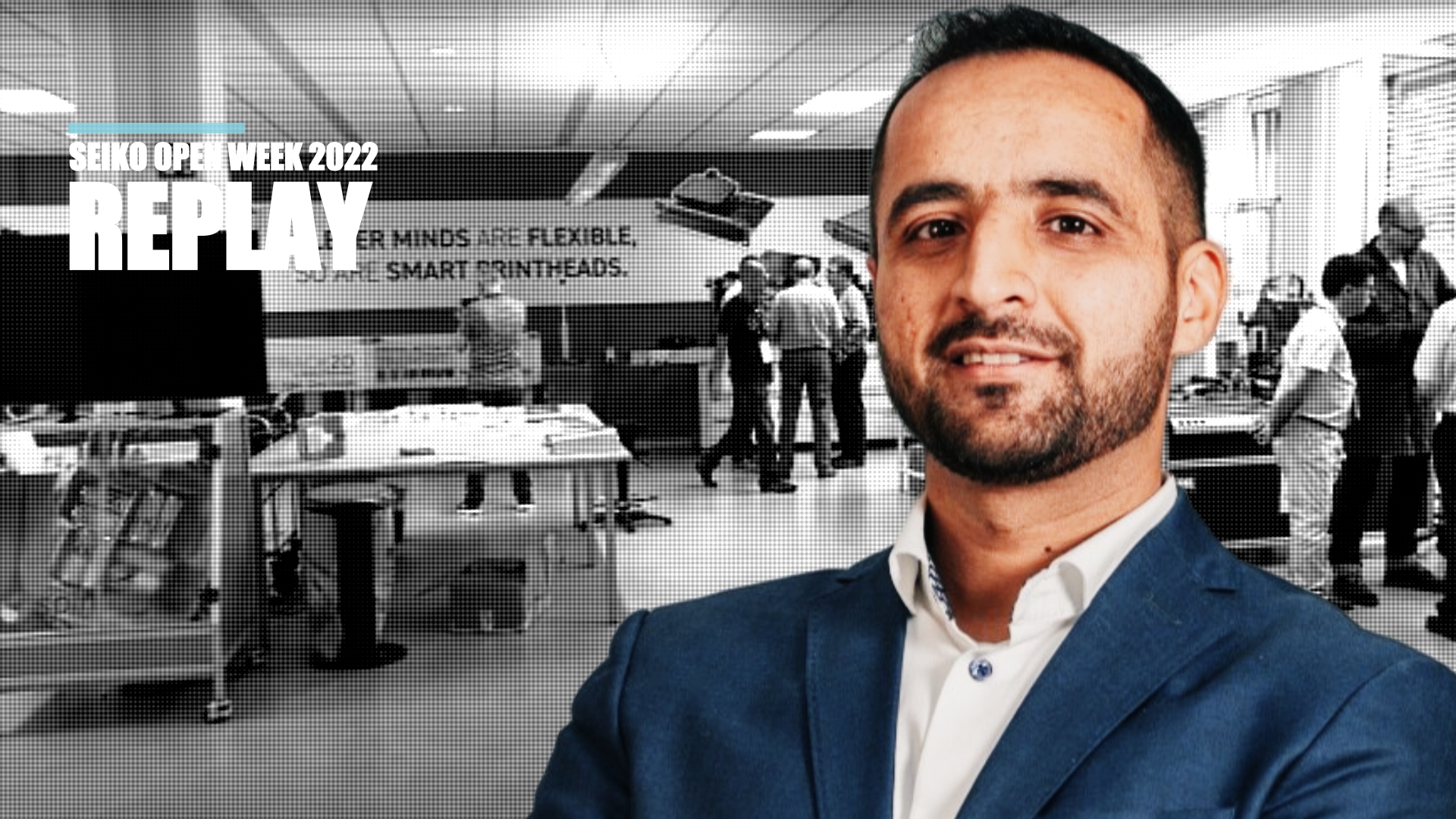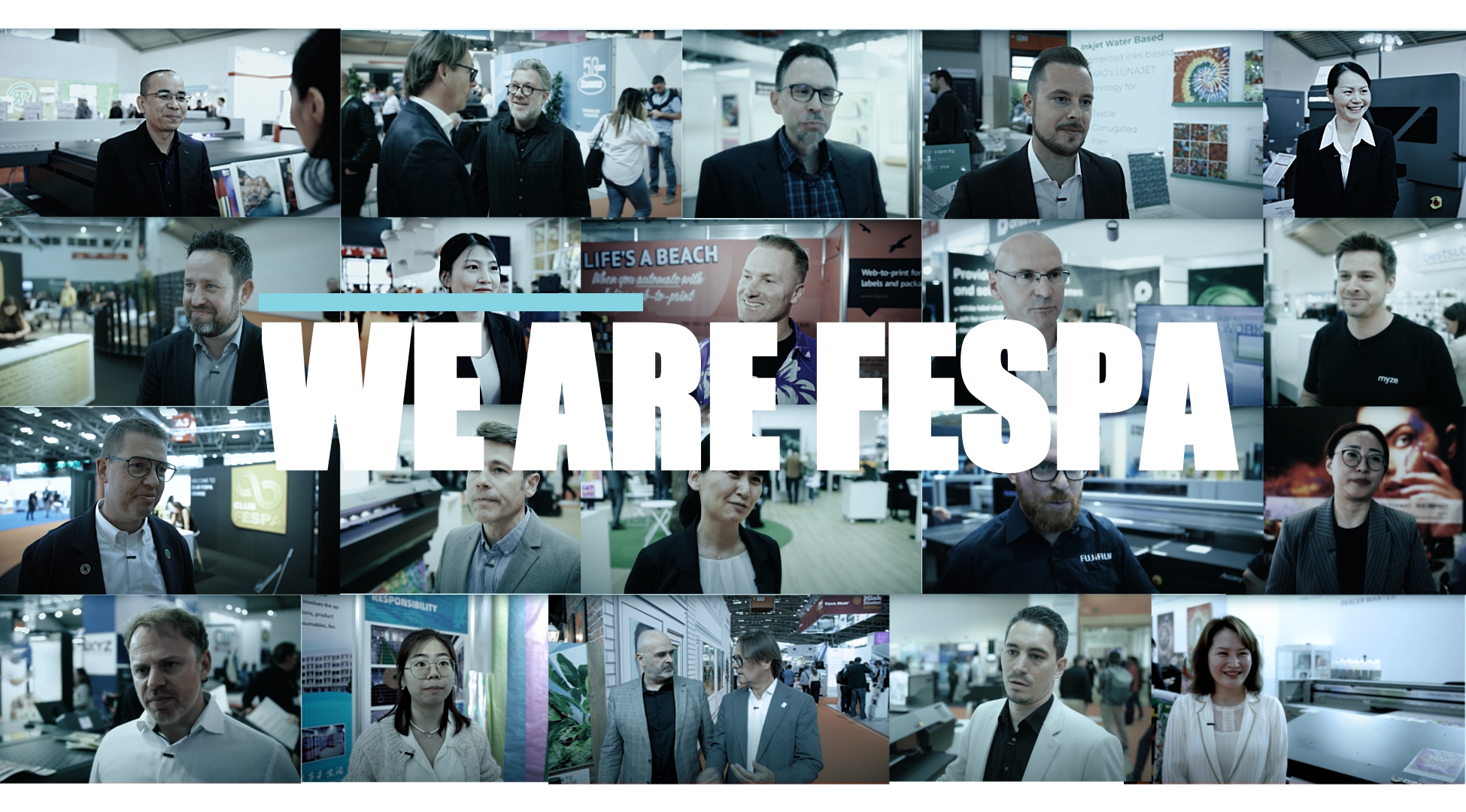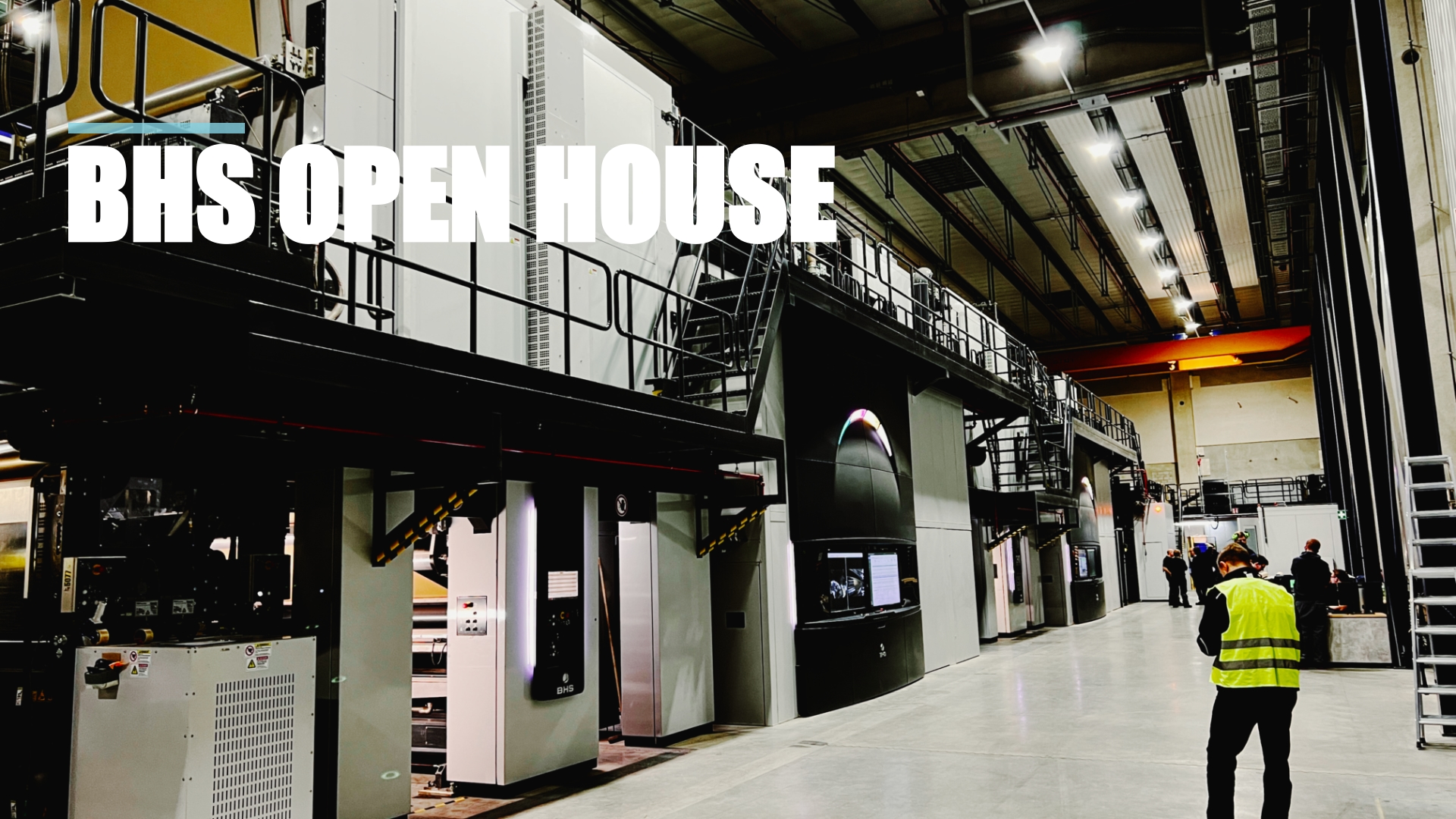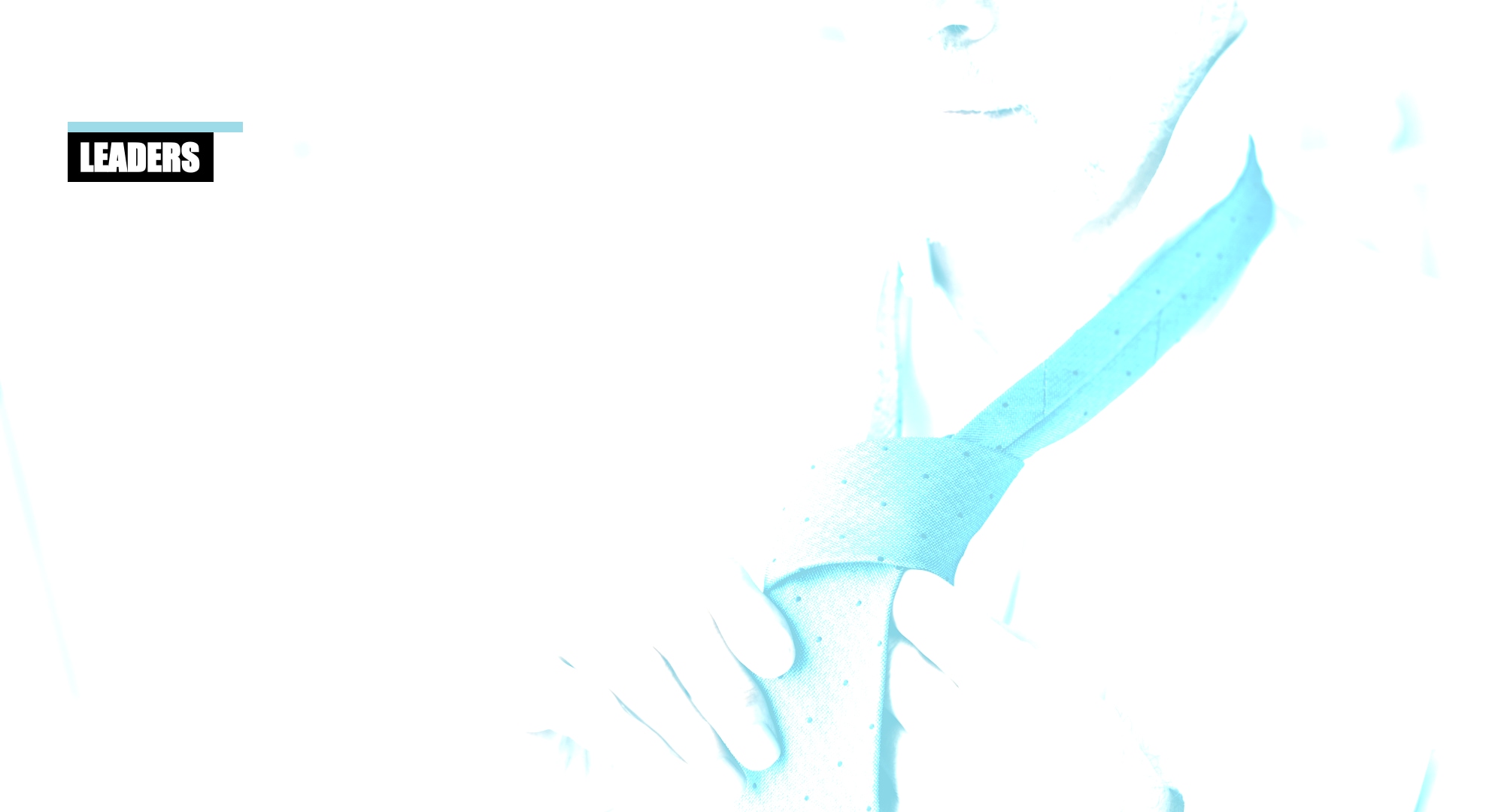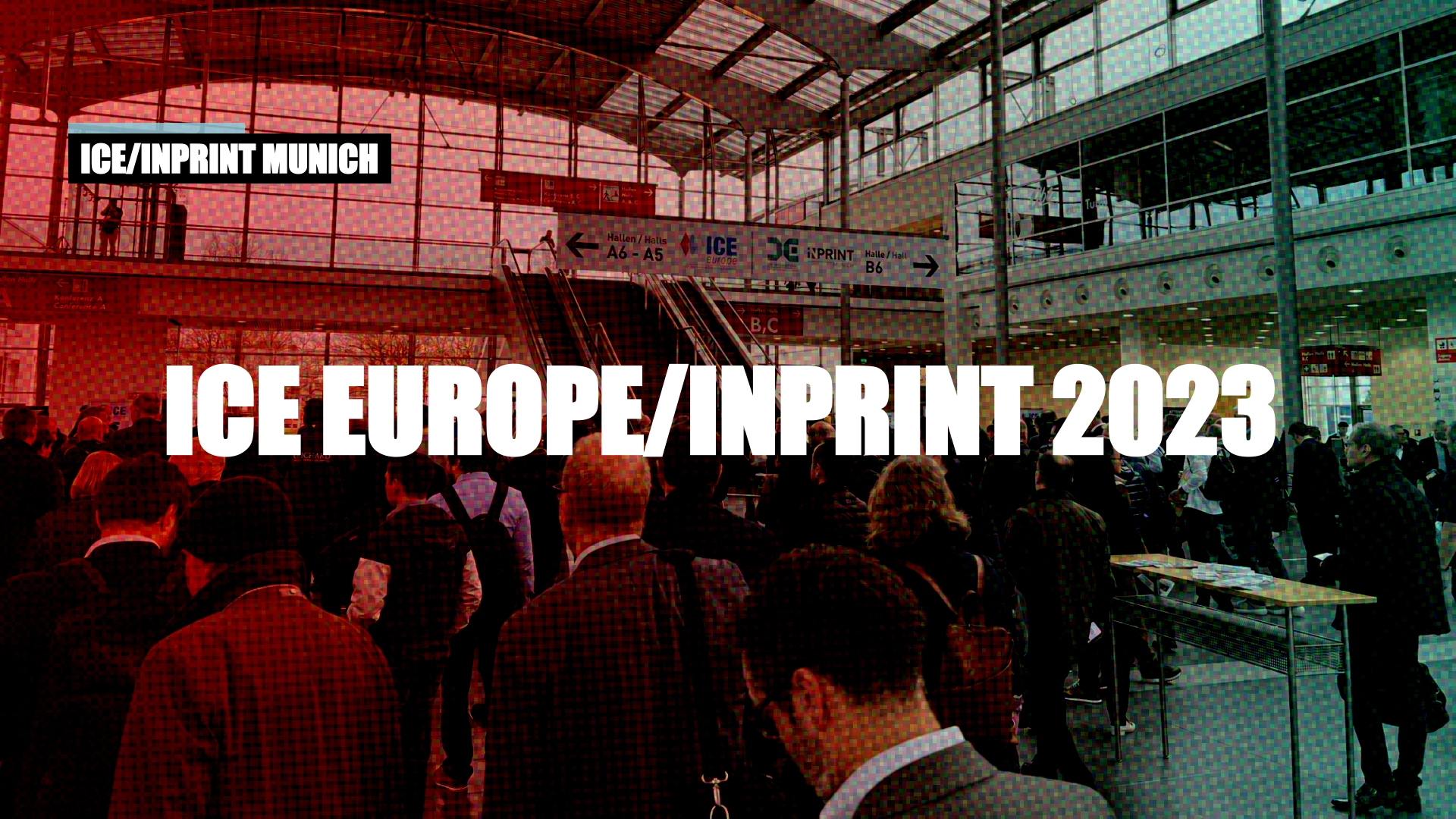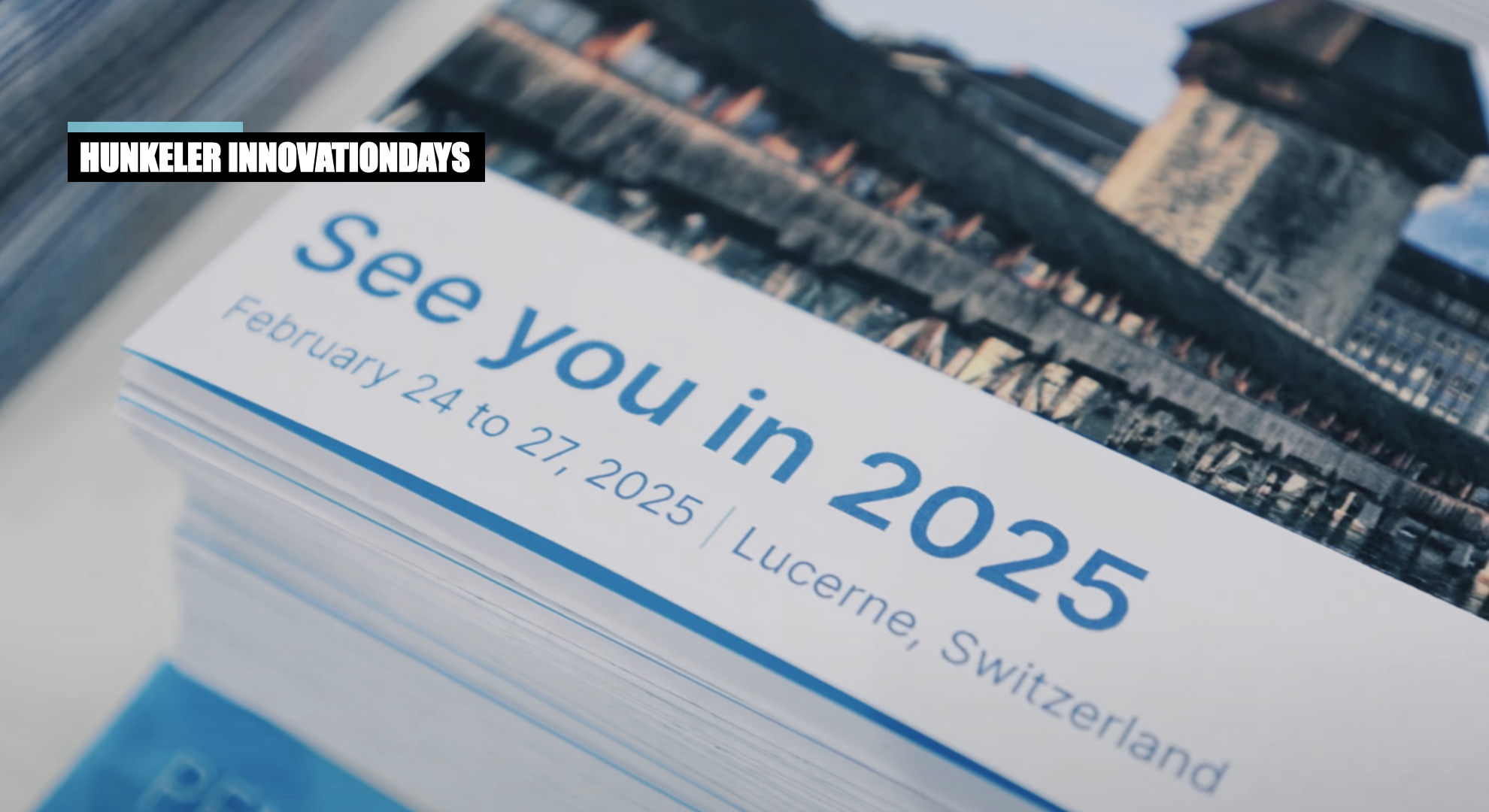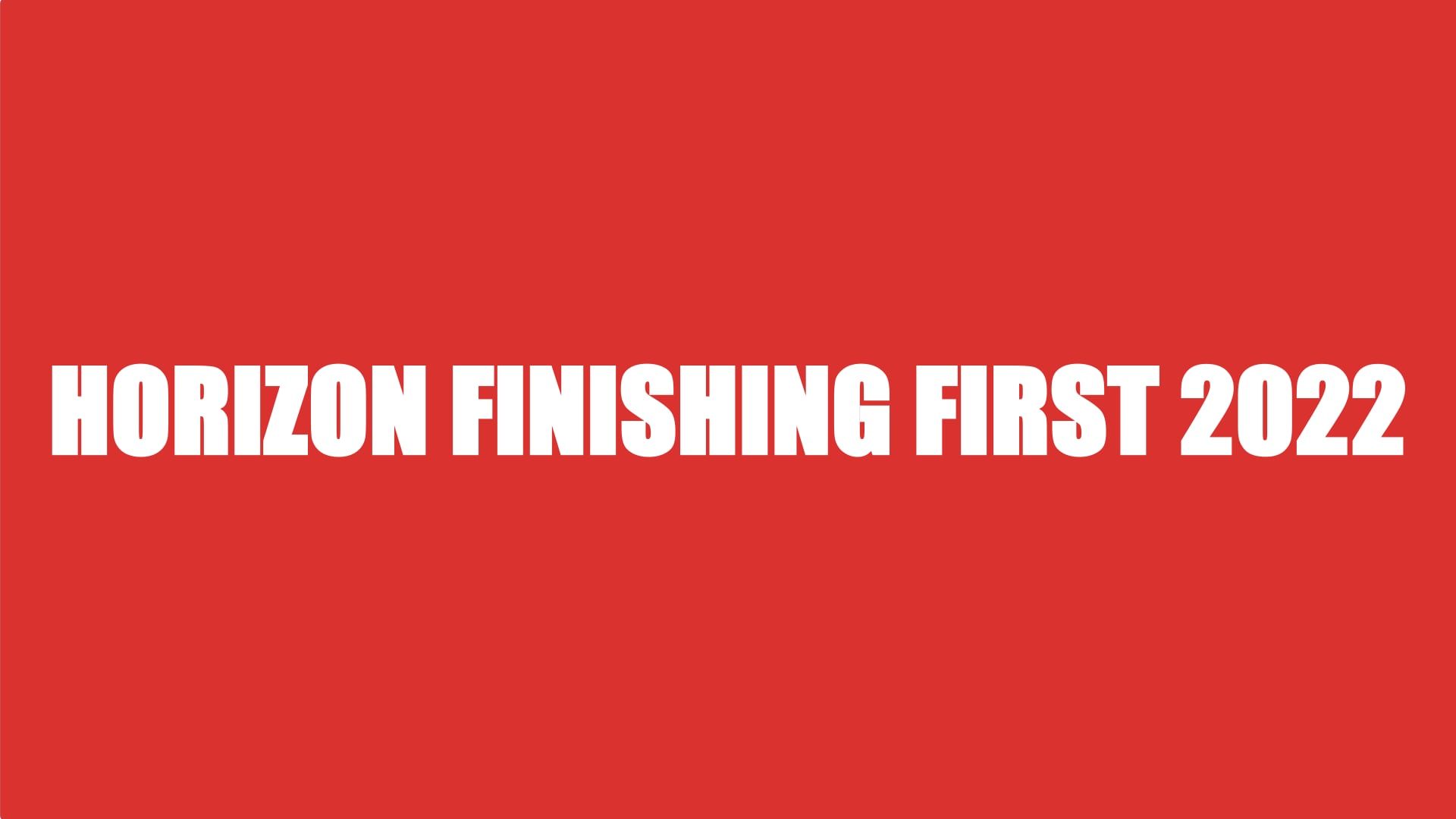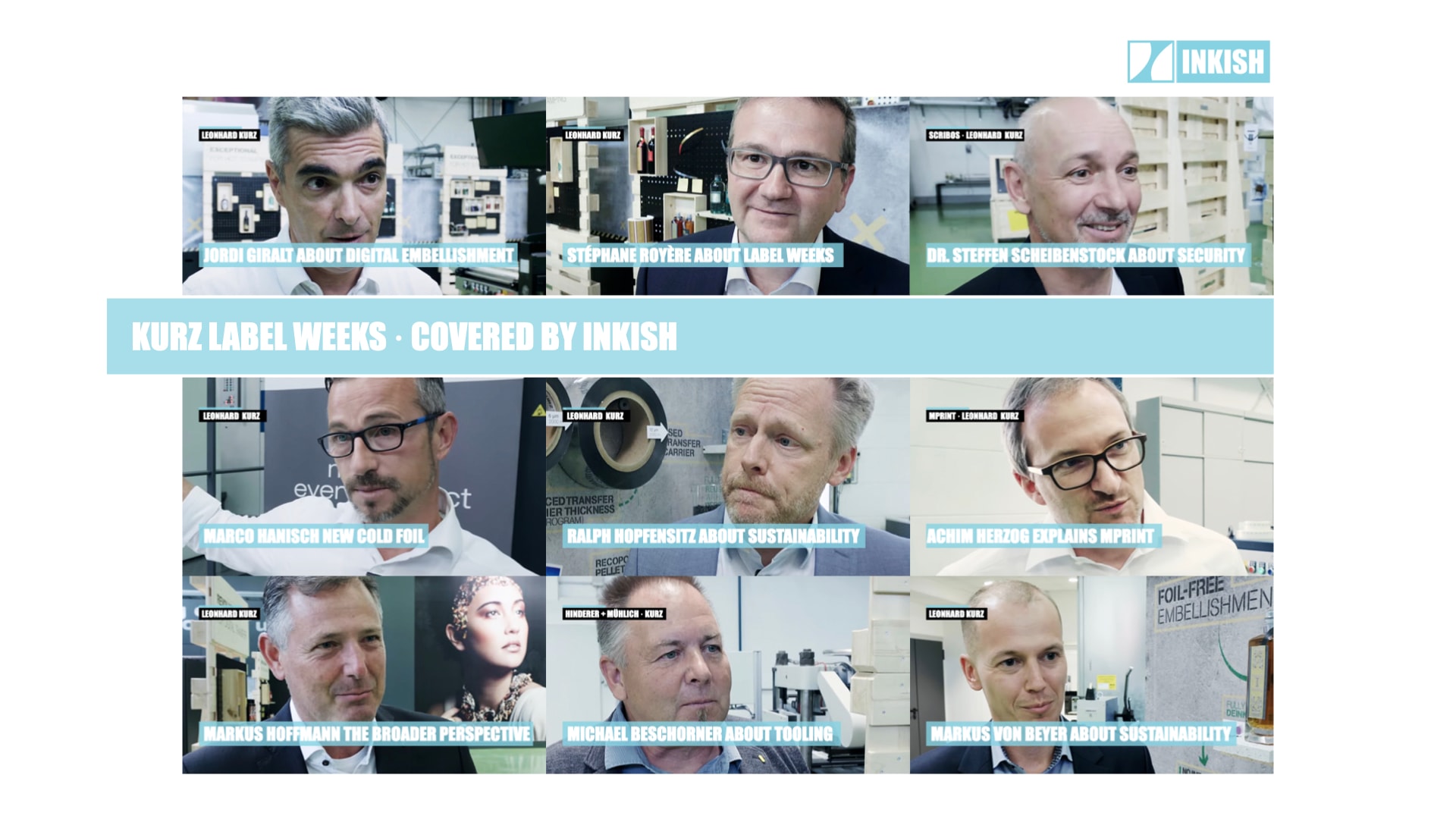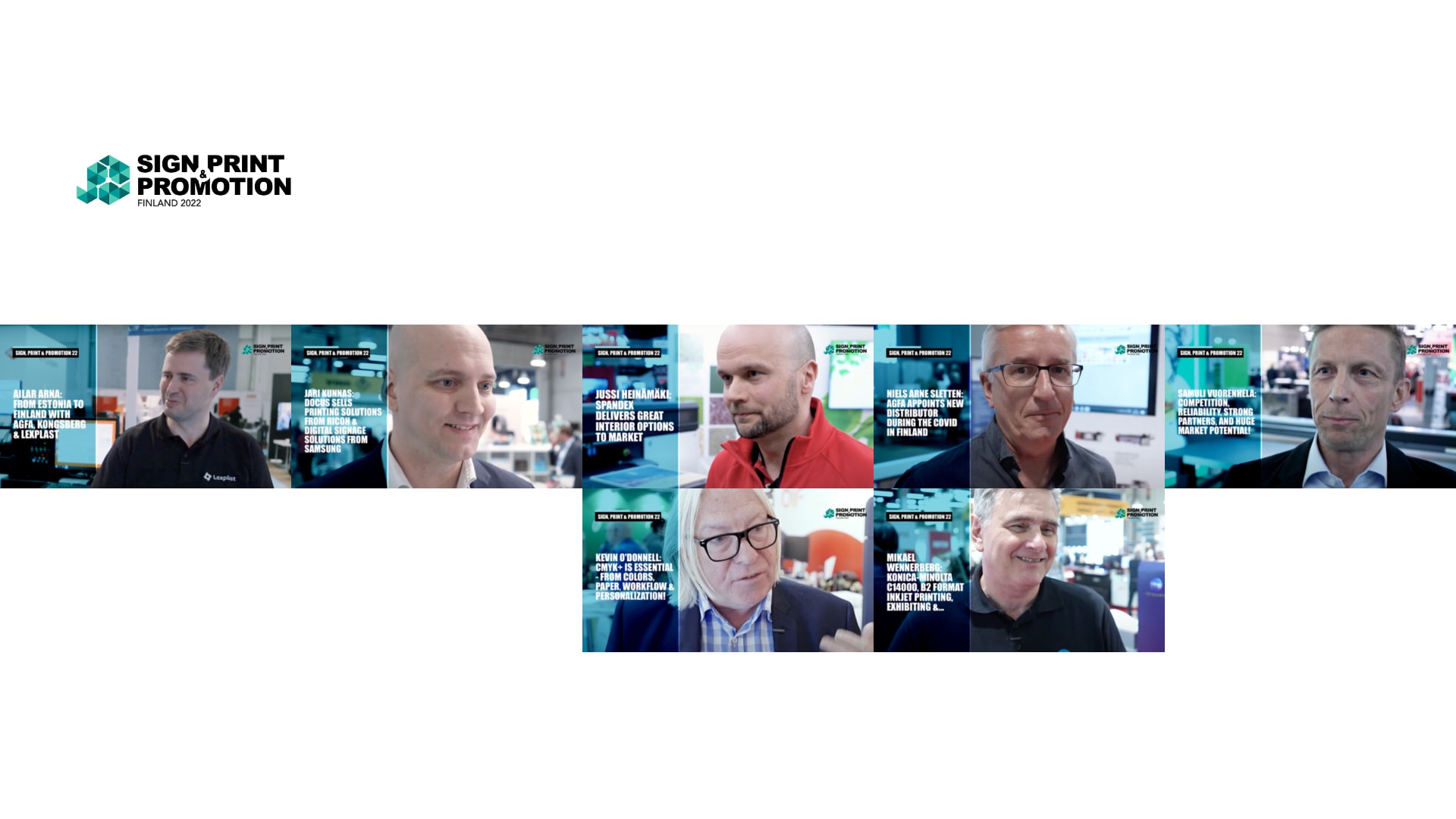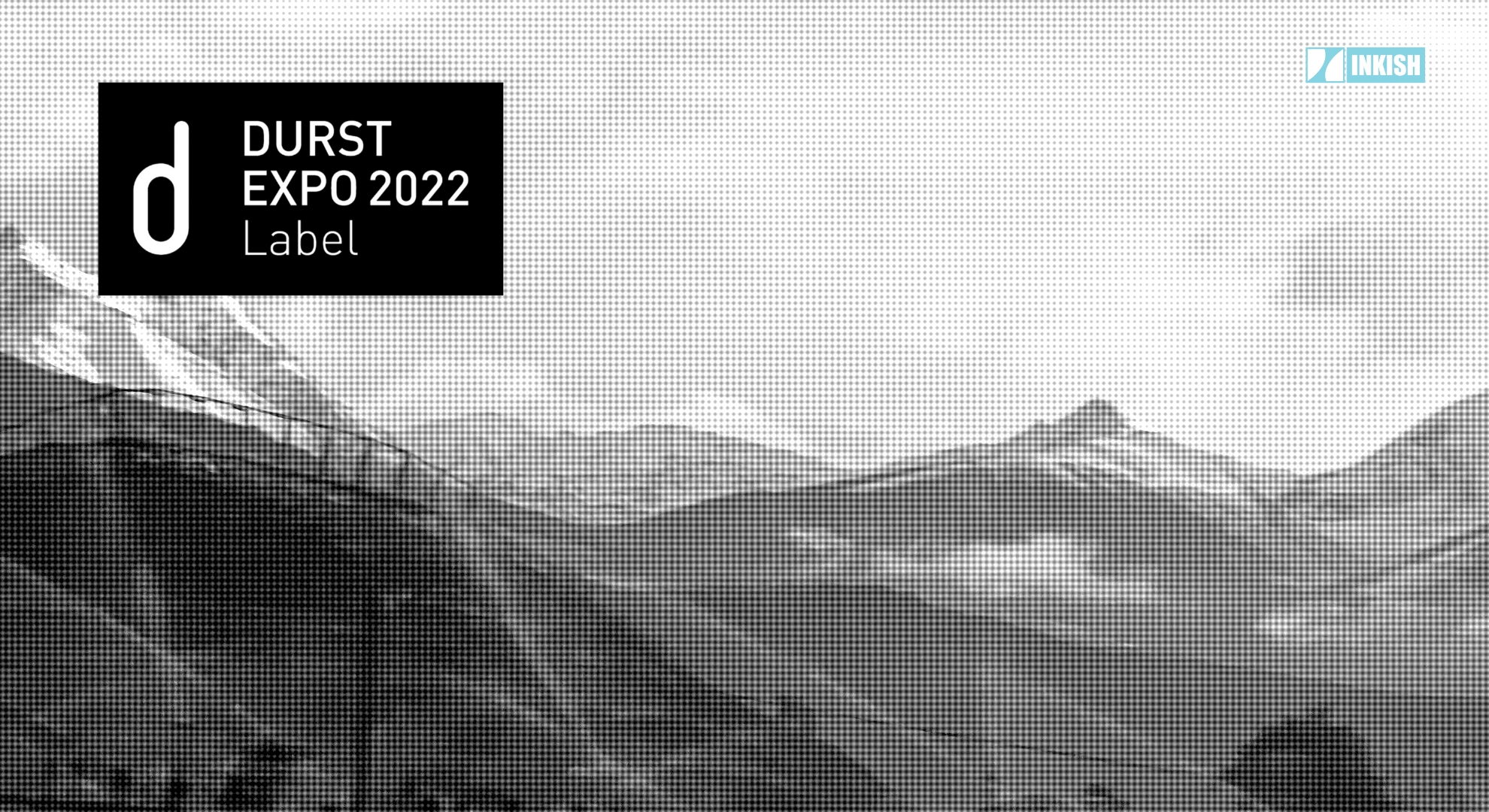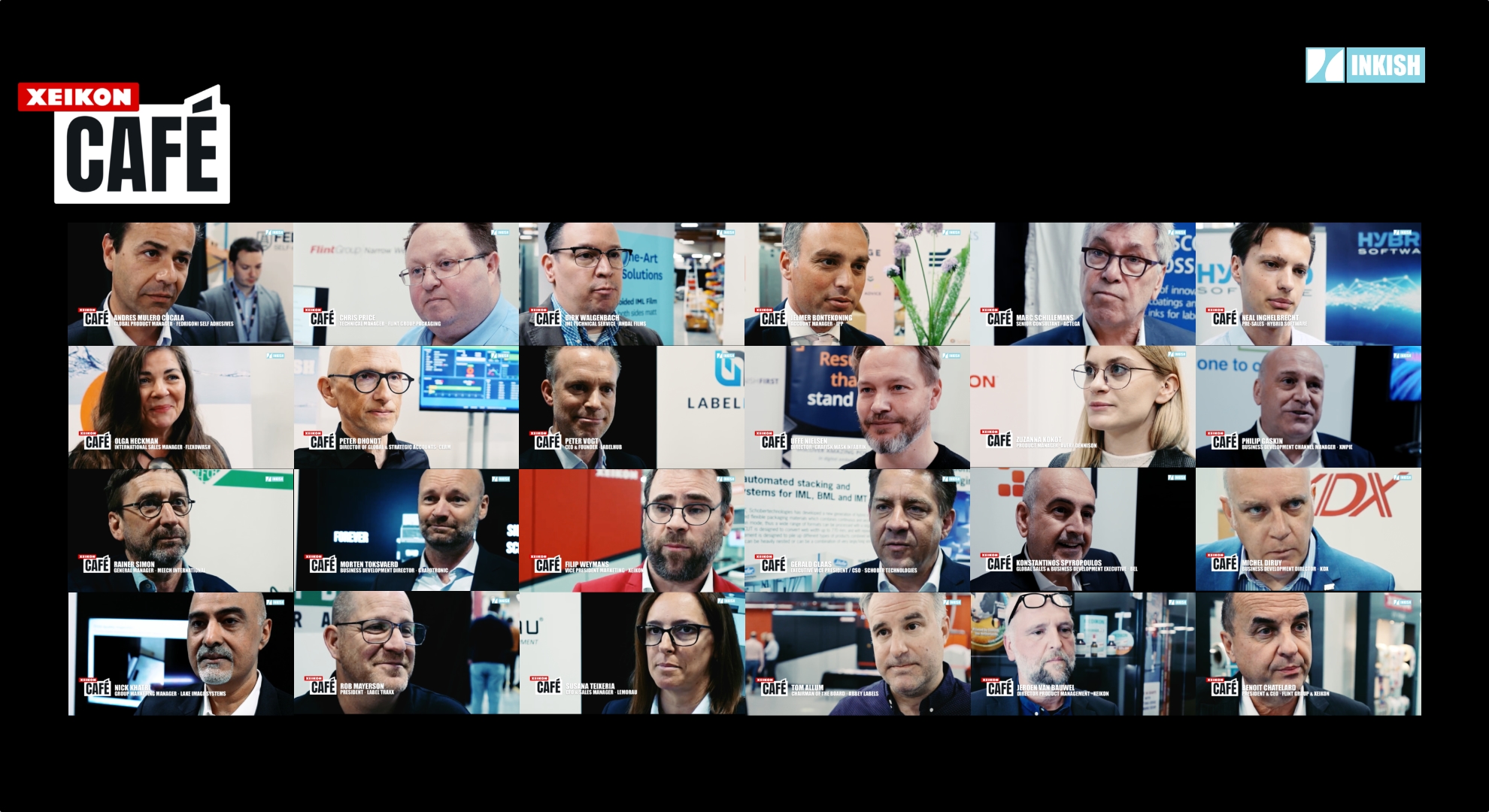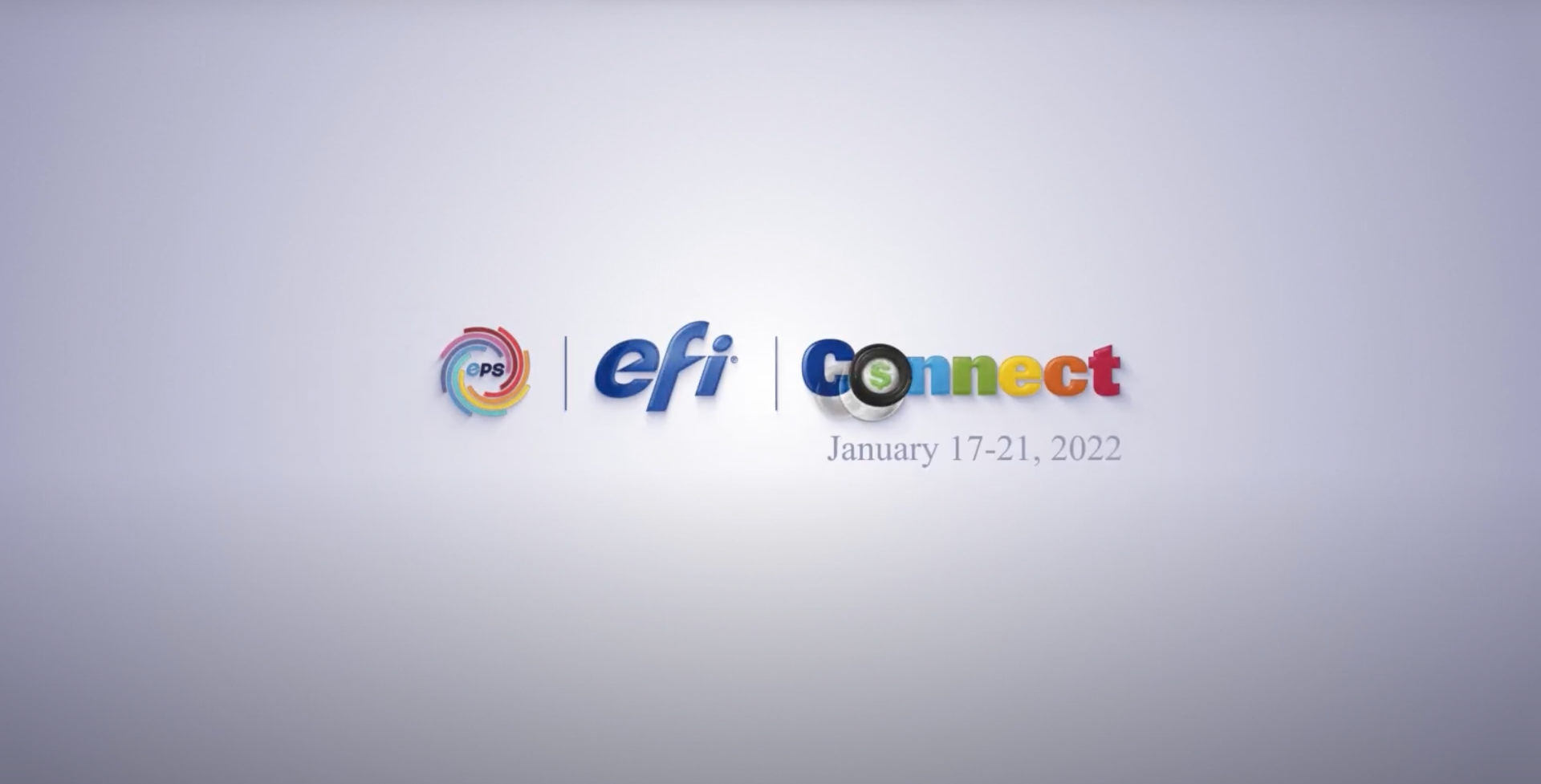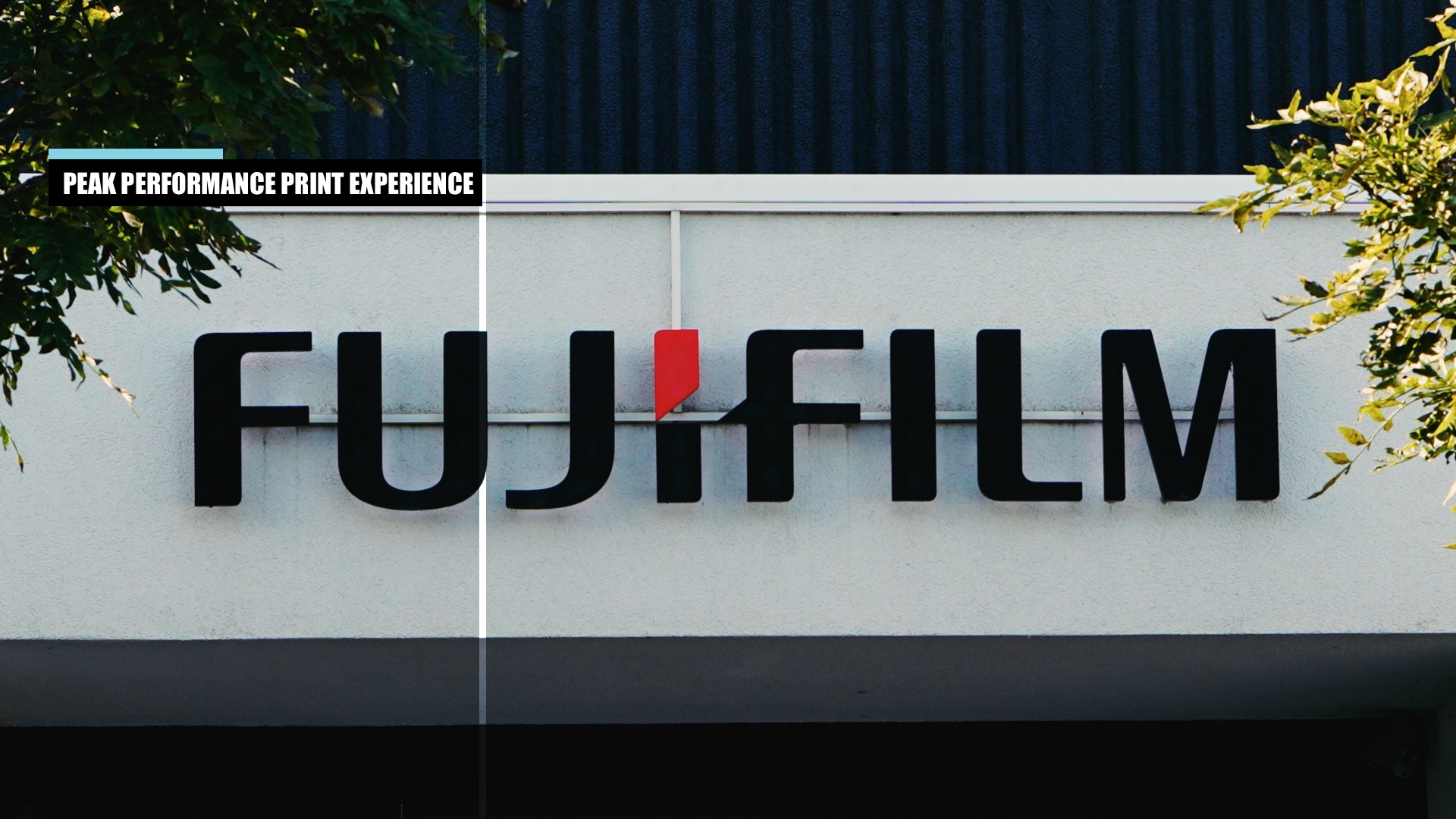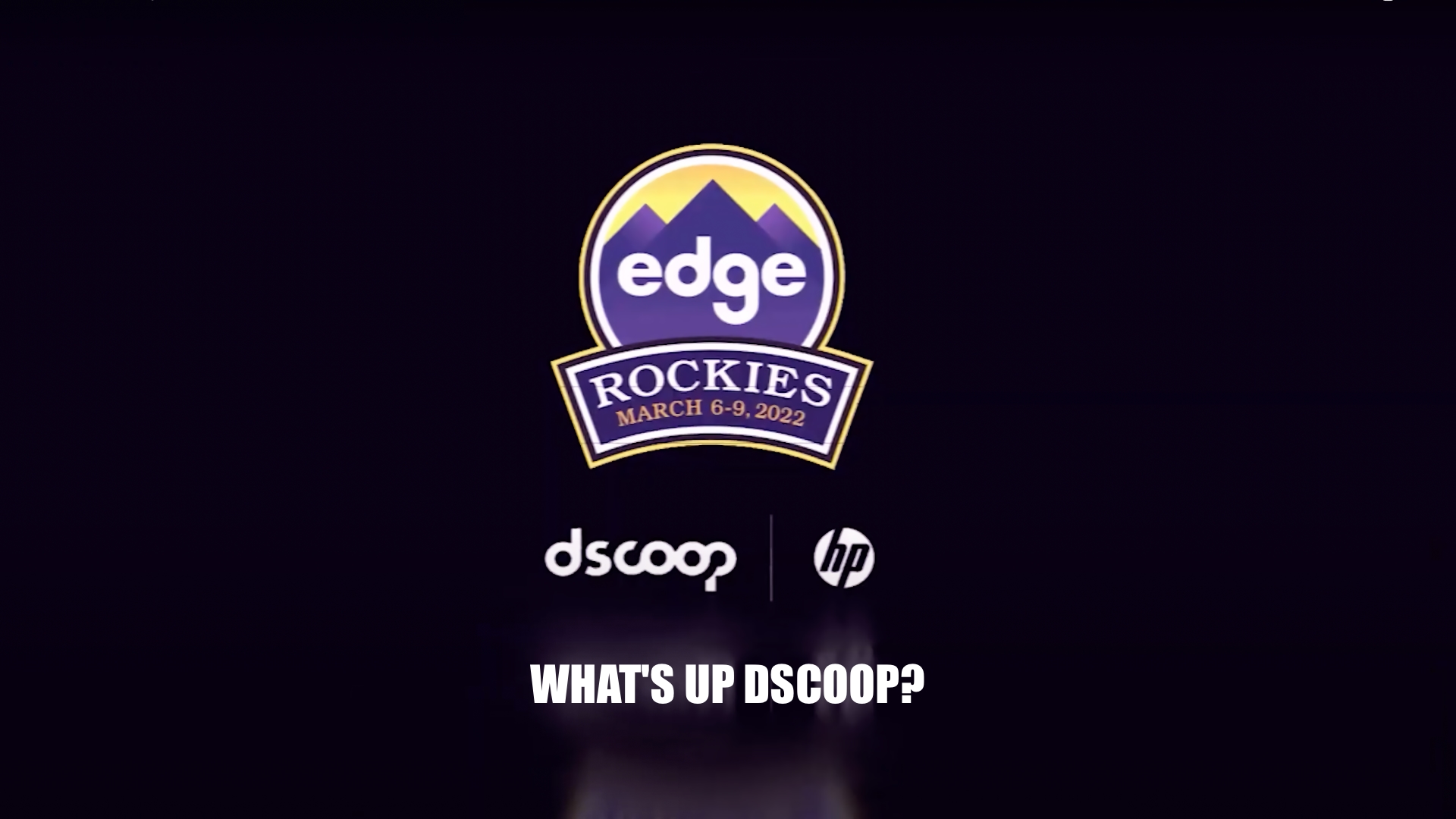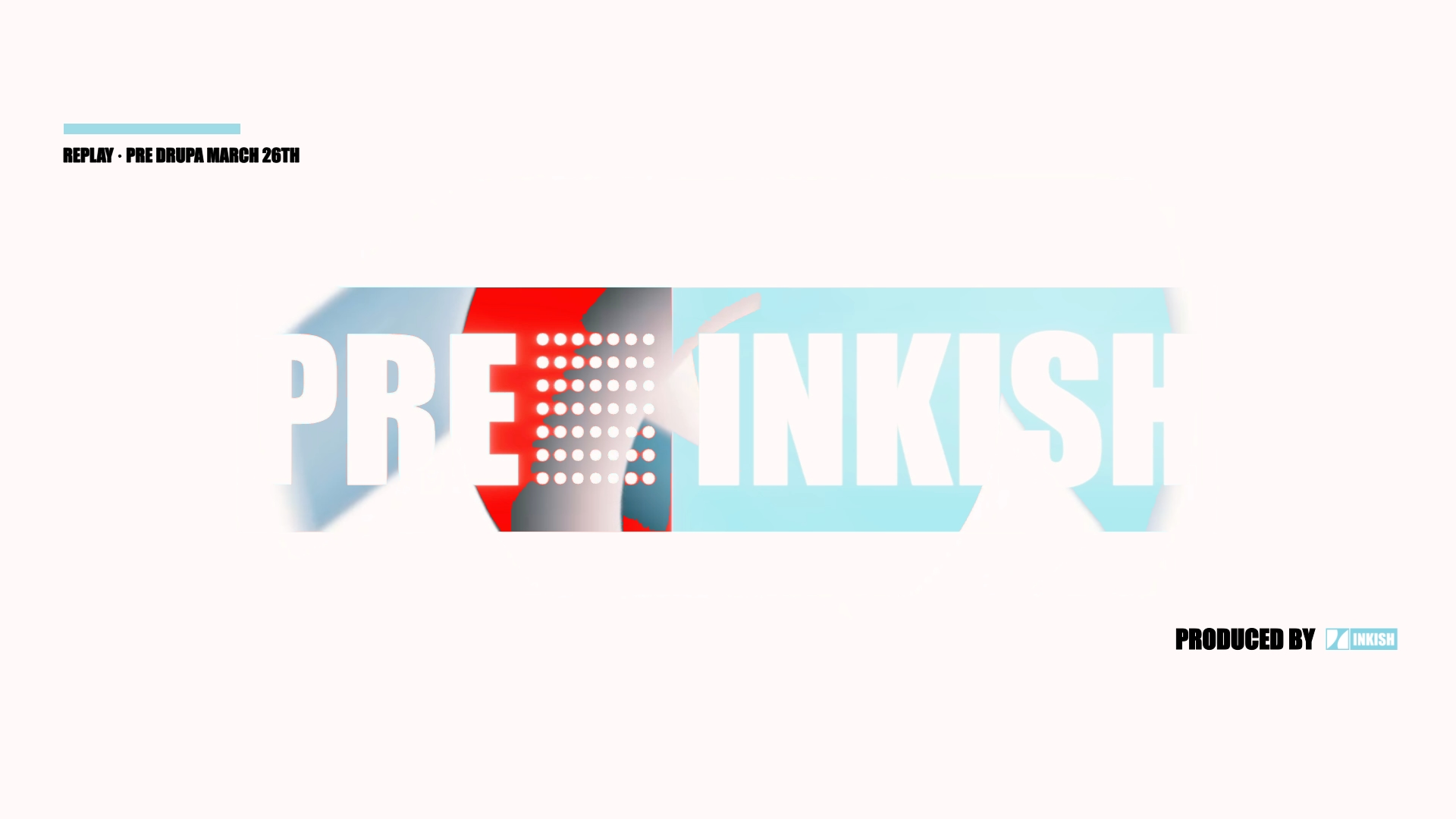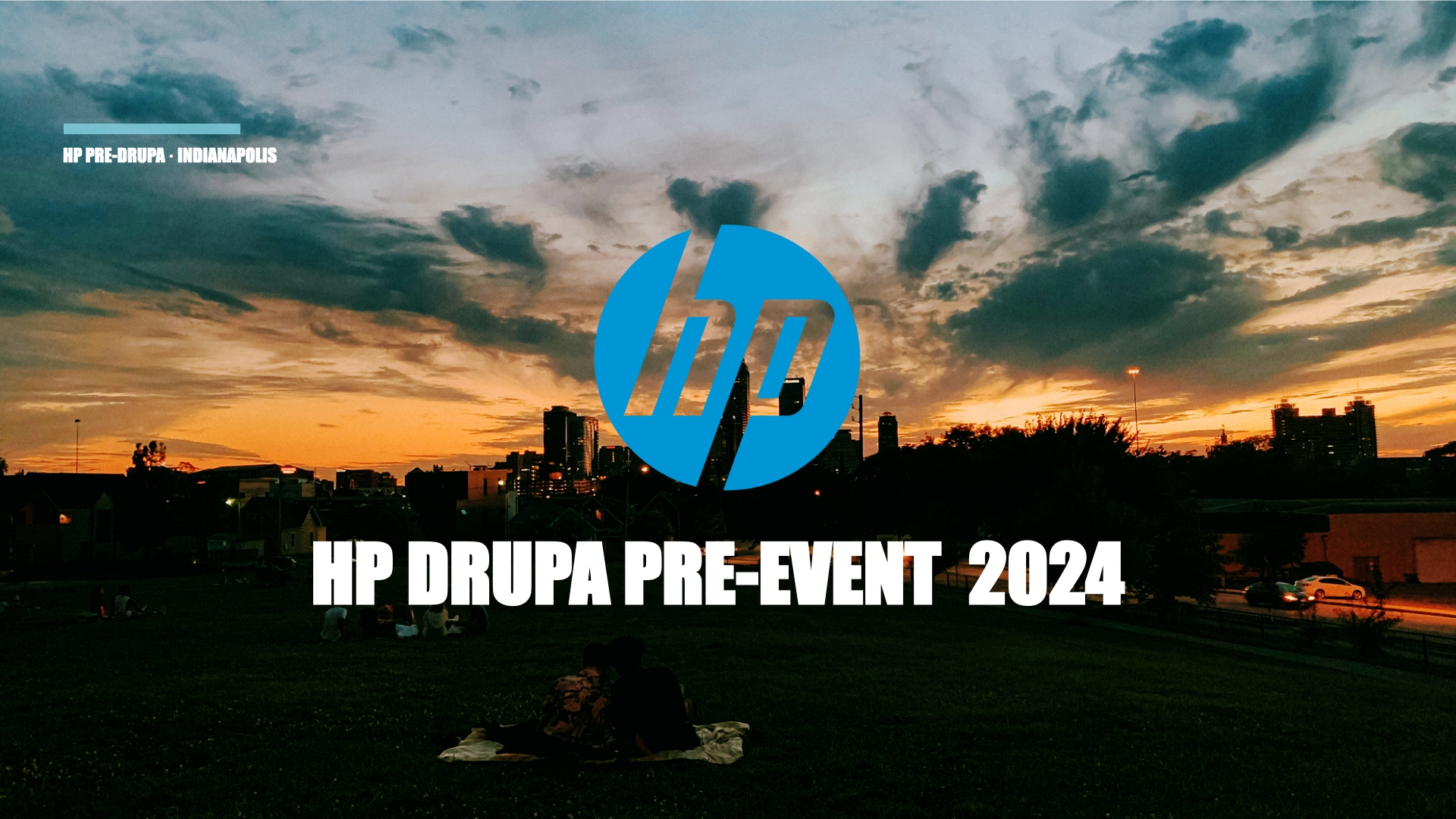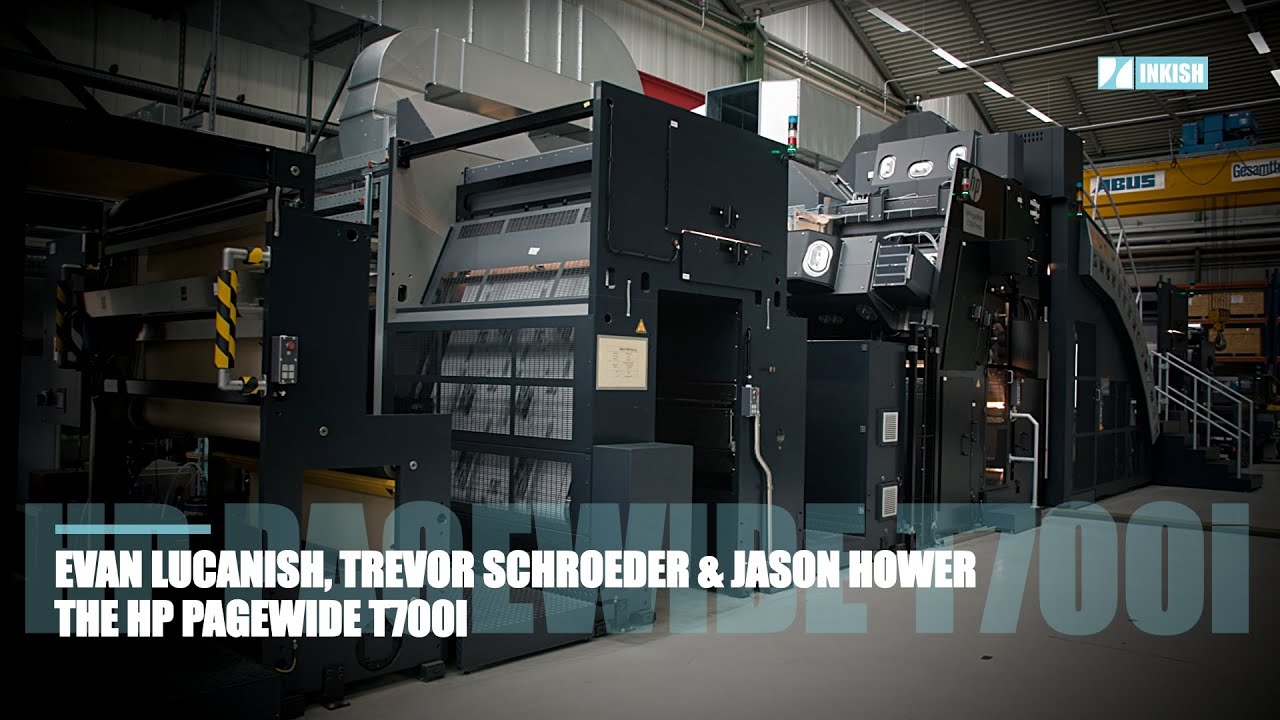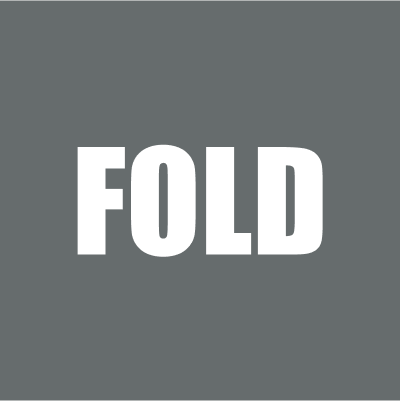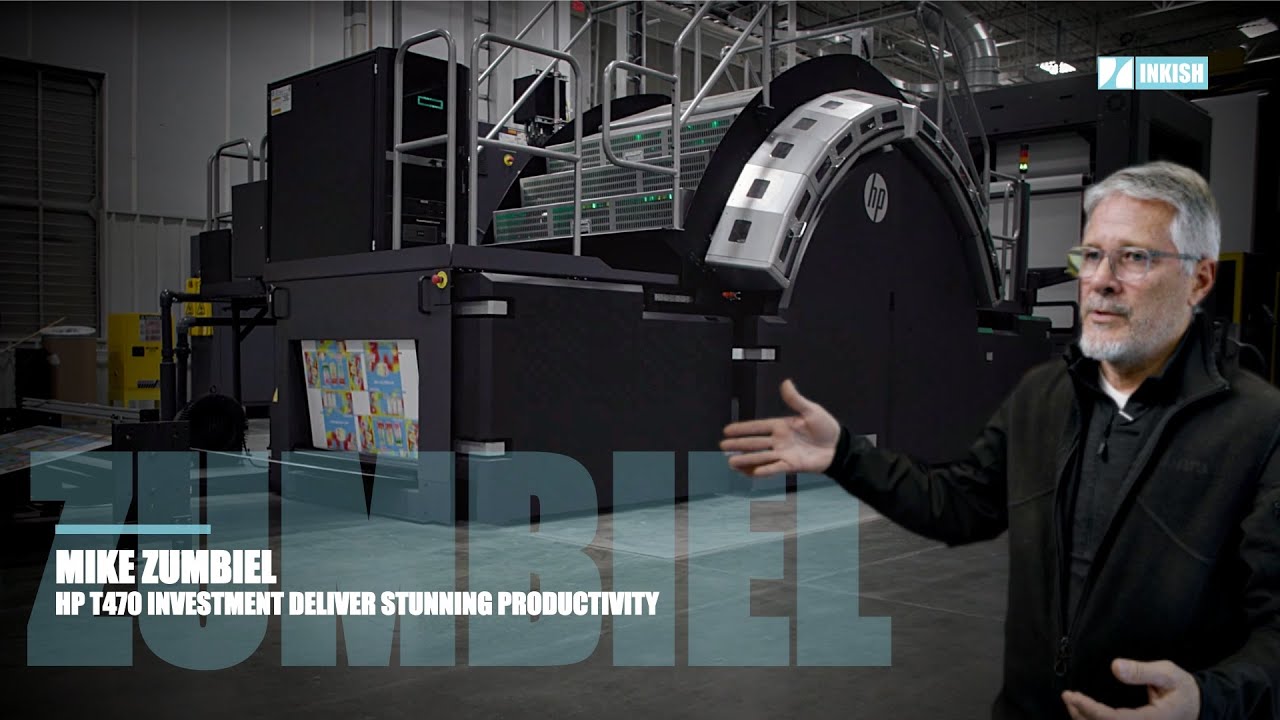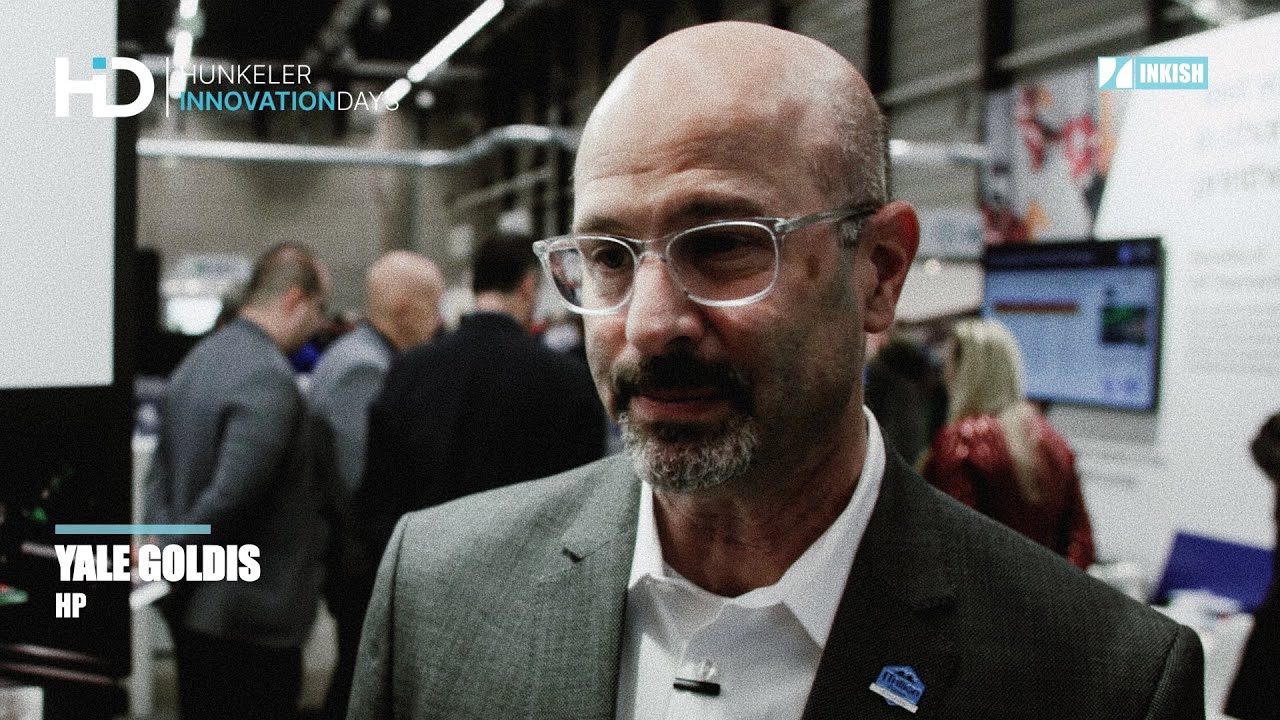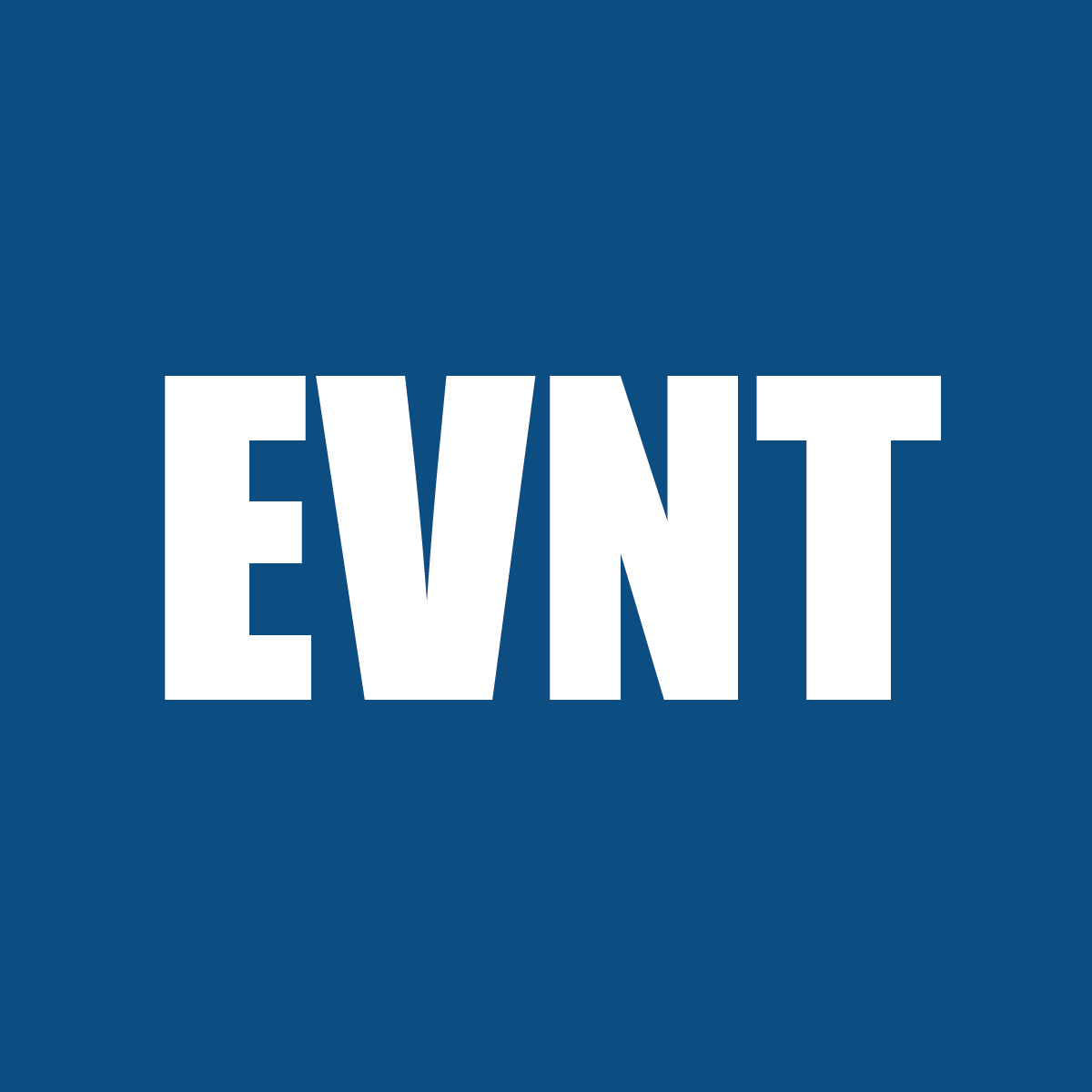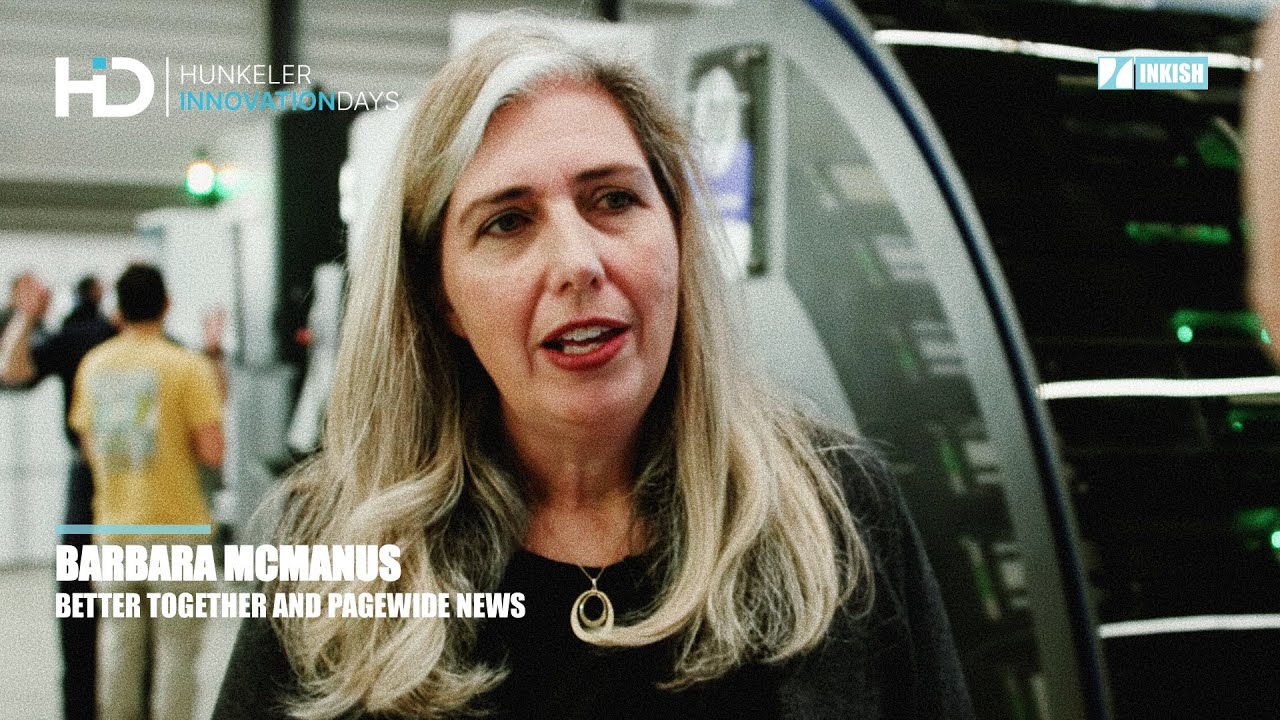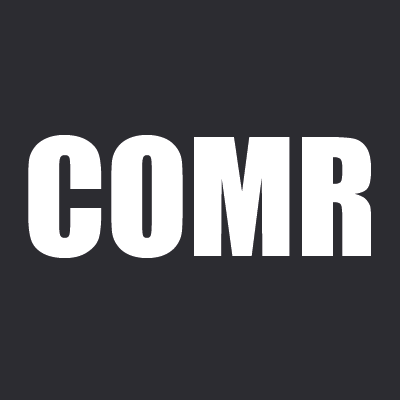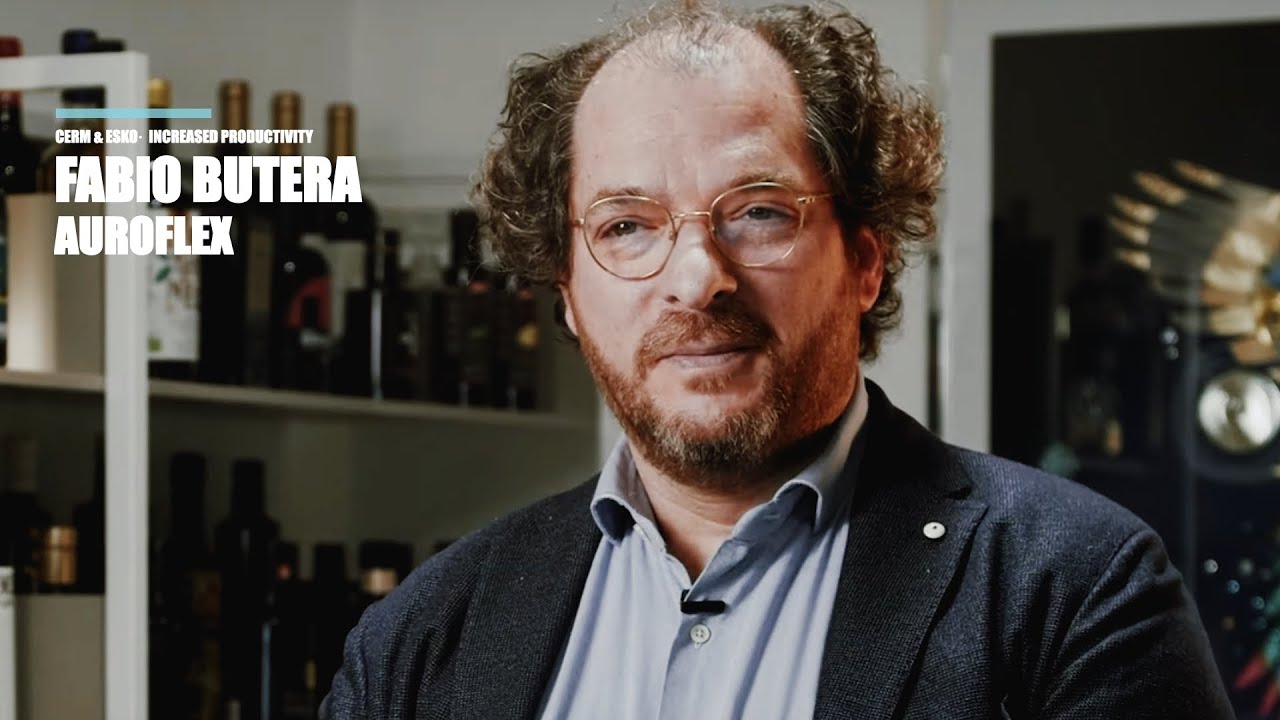Fernando Alperowitch · Over The Skype · HP
The very first Over the Skype interview from INKISH South America – couldn’t be happier, and with 50 minutes of great information about HP, Indigo, Labels, and of course also touching upon Alon Bar-Shany’s exit from HP you will get plenty of great information in this session with Business Director, HP North America – Graphic Solution Business, Fernando Alperowitch.
Great interview by Hamilton Costa and Tânia Galluzzi.
Hi guys, let me introduce myself, Hamilton Costa from Inkish Brazil and South America and this is our first Over the Skype show. Tania.
And over here Tânia Galuzzo, journalist.
Today we have a very special guest who is a Brazilian who made and makes a career in HP, very respected in all Latin America, today in… most situated in North America. We have known and had contact for many years and it will be a pleasure to have him here with us in our first program.
Fernando Alperowith is from São Paulo, with a degree in business administration from FGV, an MBA from Imec and Singularity University. He worked at Dupom before working at HP, where he developed and develops a long career. Today, Fernando Alperowitch is Business Director of Graphic Solutions at HP Indigo North America.
Hello Fernando, how are you? A pleasure to have you here with us on our first Inkish program.
Pleasure is all mine, first, thanks for the invitation, Tania and Hamilton, thank you very much.
Fernando, to start, please introduce yourself. Tell us who’s watching us on Inkish.TV or listening to us on Ondas Impresas: who is Fernando Alperowitch?
Well… I’ll try not to prolong my answer too much, but I usually define myself as a corporate entrepreneur. Nowadays I think it has become a bit of a buzzword to talk about entrepreneurship and in some moments the corporations stayed a bit behind and now they want to put a bit of entrepreneurship inside the corporations, but I promise, that’s how I always defined myself. I actually started my career a little before Dupom, six years before Dupom, undertaking. I started my own startup when I was 19, was in the middle of college and a little disappointed with the theoretical part of college. I started a drip irrigation business, absolutely nothing to do with the graphical market, and six years later I went to do my MBA at Femec and really there was the first time I was invited, by ta there, to go to a corporate world. I had never thought about that and I went basically to spend two years at Dupom, I had an absolutely sure plan to stay there for two years and then go back to entrepreneurship. This coincided with the crazy dollar and elections in Brazil and at the end of 2002 I ended up accepting an invitation from HP, at that moment recently acquired by Indigo, also thinking about staying two years, absorb what I could, know the printing market that I knew little, a little because of Dupom I had contact, but I didn’t feel in the printing market, I still didn’t have ink in my veins, and I said “that’s what I want to do” and then go back to entrepreneurship. But, as John Lennon says, “life is what happens while you’re making… you’re busy making plans”, and here I am after seventeen years, almost 18, a completely different life than I had thought, but I’m still very happy.
Nice, Fernando. Nessa, you said drip, that didn’t inspire you anything about the Inkjet, right… something inside is that? [laughs]
I’ve always worked on drops.
Let me tell you something, you, I’ve followed your career practically all the time you joined HP and you followed closely the growth of Indigo, not only in the Brazilian but also in the international printing market. You were, in a way, part of that team that worked on the concept of Indigo in the printing market, right? That spoken digital offset, the question of liquid ink, the question of bringing Indigo closer to the concept that the graphic had of offset, put in the minds of the creative in relation to better print quality would have to come from Indigo, tells us a little bit about this walk.
Hamilton, with great walks and challenges, when you look back she seems much easier than when you’re there doing it. If someone told me that I was going to be three and a half months at home, before I was three and a half months at home, I would say “I can’t stand it, I can’t stand it”. And I’ll tell you the truth, now I look at three and a half months and say “it’s gone fast”. And we keep…
I agree with you, I agree with you.
Busy and productive and finds a new way to add value and even see good things in it. When I look at this challenge that you just mentioned, it’s similar, because I’m not going to say that this challenge of being able to conquer is over and, I’m going to use the word that we used at that time, to evangelize, we even had a person who was, who had a position on his business card, evangelist, because it’s something more like the challenge that we had, of being able to preach to the market, not only traditional, in some conservative way, but mainly without a pain of crisis or profitability or a decline in volumes and price, and margin, of course, the need to go digital. When you put it, it is, it accelerates and today look, it seems more or less obvious, of course we need digital, of course deliveries are more fractional, of course we need to reduce the issue of waste, of course we have to take care of the environment, about eight years ago, fifteen years ago, until twelve years ago, it was not like that. So, this “ant” job, which I think HP had a huge responsibility in doing, was hard, it was fun, but we had to be very close to the conscious, especially those in that famous curve of technology adoption, visionaries, and try to ensure that most of them could succeed. We embraced many customers that unfortunately some were not or because the technology was not ready for what they wanted to do, or because the pain of their customers was not yet being manifested or because the economy some reason and logical, was not for everyone, but many of them, if you look even there in Brazil, started behind and today are those who are surfing the macro trends that are helping them so much, especially at this time of pandemic. So, once again, looking back seems a lot easier than it was, but I think it was one of the great challenges of my career, without a doubt, and of HP’s success and therefore leadership. Of having invested back there, not necessarily just selling the next machine, but being able to “guarantee”, without being a real guarantee, optimize, maximize the success of your customers.
Perfect, Fernando. In this respect, in these almost twenty years, the Indigo line, it has become a reference in digital printing, especially in various segments, but especially in the segment of labels and packaging. How did it grow specifically in this area? Well, first, it’s… Many years ago when HP started going into packaging, at first on labels too, but then packaging, a good part of the market had a big question mark about whether this was possible, because of the speeds, because you only talked about price per ton, because, once again, you didn’t feel that pain of our client and our client’s client, so for a long time our main business was commercial printing, so, as we call it, internally, but basically it is the commercial printing that, even today, corresponds to more than 65, almost 70% of our current business, so, today we talk a lot about nesquitas packaging[? ] which is the segment that I love, my father was one of the founders of BF in Brazil, of the Brazilian selection of flexible packaging, so I have a affection, I grew up seeing polixilene being extruded so this always called my attention personally, and it is a market that is very in vogue for everything that we already know and the market trends. but, until today, HP continues to be, Indigo continues to be, HP in general but, Indigo continues to be very dependent and co dependent of the market and commercial printing. Now, as it was this migration if we talk to people who have lived a little more, you two surely remember, the beginning of the photo market was a similar struggle, something that barely existed in the graphic market, which was very restricted to another segment that also did not feel the pain, that also moved based on two or three brands, that helped them for a long time and that, as it says in the movie, if you build, the public will come, you simply had to have your store with the brand and they were going to come to reveal their films for a long time they didn’t need to innovate so much. It wasn’t part of our market.
It was not part of our market and for many years we had to invest in specialists, in fairs, in technology, in knowledge so that this market could transform itself the way it has today. I think direct mail or direct marketing with variable printing, the publishing market, are some examples that in the commercial world we managed to do this development and maybe it was left for later, because the market was less lacking solutions like this, the packaging market. And here I include the labels, which was faster for us to enter, because the technology favored from the beginning, and technology is a key point, you talked about offset quality, if not for quality we could not make this migration because the flexography spoke “why do I need to change? Ah, to have a better quality, so yes” and even because of the width of our equipment, it took a little longer to really get into flexible and then carton packages. So it took a little longer because the shapes that things were bought, that the packages were bought before made less sense, but now it has become a great glamour, first because there is a decline in the commercial market, I think this is a reality and a reinvention has still companies that continue to grow and profitably, but in the general market there is a decline, and a certain migration of attention and investment to the packaging market. And luckily, or because our technology is at the right time after so much investment, we can today have a good solution for this market. But at the cost of a lot of experience in other markets and being very close to the customers. Hamilton had with us in events such as a record, which I think is one of the great ways, not only to pass knowledge to customers, the way we are talking about being able to educate the market, but also feel the pulse of the market, not only individually, because we are talking to customers all the time, but also as a group to be able to understand what are the needs of automation, quality, color, speed / size / productivity, then be able to understand, bring back to the factory and take launches to each cycle of innovation, including this one that is passing based and totally based on the needs of today’s customer and the future, I think it is the great virtue that HP-Indigo has achieved. It’s very close to the customers. Very nice. And it’s true, even sorry, what you mentioned is fantastic I had the opportunity to speak in three of them in the United States, at your invitation, one here in Brazil, which was also very nice to feel this fantastic atmosphere. Now, there is another aspect, first a little you spoke about the issue of labels I think today there is an even stronger migration due to the decrease in print-runs and labels, etc., I think the digital starts to be more and more important in a certain part of the market of the label next to (I do not understand that word). Now, on the other hand, since 2008, with the launch of mainly the rotatives, HP inkjet, T line, today all page white, the inkjet has grown a lot also within HP. And it has improved a lot in quality over time. In which main markets are the Inkjet machines, I’m saying the rotary machines, production printers effectively, not the large format, but, what main markets are they being used so much today?
Hamilton, I’m a big football fan and I keep that up until today, and in football we say that the chat in the dressing room among the players is the so-called ‘review’, nah, that’s in fashion now, everybody talks and has television programs based on the review. The review inside the executives and employees of HP-Índigo usually goes through that drink at the end of the night, what would be the Indigo if it had not been purchased by HP? So I don’t think I’ve ever talked about it, but it’s a very normal conversation, quite common.
You can talk about it and more backstage stuff that we want to know about.
Always a pleasure. We’re gonna need to double the duration of this chat.
We’ll do two shows, no problem. And the next one with an evening drink between us too, so I’ll talk even more. Well, in these informal chats we always joke about what it would be, what it would do, what the differences are, and I think one of the conclusions that are usually almost unanimous, is that it is a privilege to have HP embracing Indigo when you can go to a client and say “I’m offering you Indigo technology, but that’s not the only one I can offer, because it would be very easy in quotes, I come and say “that’s what you need”. HP is the world leader in the inkjet market, since the beginning of the technology, the number is so impressive about cartridge shipments per second or per minute that you say “wow, this company really knows Inkjet”, not only in the consumer and corporate market, but also in the printing market. For a long time, in large form of signage, as you know, but since 2008, we are already talking about 12 years, with customers with, here in the United States I have come across customers with 35 inkjet rotatives inside their own plant. So… Really? What company is that? Tell me about it.
Yeah, well… I ask permission and I speak, but it is in the publishing market, a very well known company, so it is, it is very impressive and I think that this combination of being able to talk about two technologies that have their value and their need and this need being interested in technology, I think it is a privilege. So coming back to what you asked, how to combine and what the applications are, first, the inkjet markets I think are clear because they depend on speed needs, on reduced costs, but on the other hand the number of substrates for a long time was more limited than an Indigo technology, and also the cost of printing depends a lot on the coverage, So it has a niche market, I think it’s bigger than a niche, it has an application and market segments like transactional in terms of account statements and telecommunications, utilities etc, that for a long time we tried to go only to the promotional or trans promotional market, but I think it ended up being adopted as such. .. We talk about it a lot, we talk about it a lot.
And we were actually trying to go to a smaller niche, create something different, when the market ended up embracing the mainstream, the traditional one, what’s called the white paper factory, where the white paper enters and the printed bill comes out, and not only pre-printed in offset and printed in inkjet on top, then. Or laser, then entered the editorial that today I think is the great application in inkjet, for a long time only in B&W, and today also color, and even some promotional applications, either in direct mail, here in Brazil I think it has a much smaller adoption, but until today in the United States I still receive a huge amount of direct mail, part of them personalized or dressed, so there is still a large adoption in these markets. While Indigo, is not being questioned about what is the future of Indigo, since the inkjet continues to evolve, and an example of this in the portfolio of Drupa, I invite everyone to enter our site and can see a little more about V12, which I think is a great revolution that Drupa had happening this week.
We’d be there today, right?
We would be there today, I can bet that would be the great attraction of the fair. And, as I think it will be next year, even though we still have a plan for the event, I can bet that V12 will be the great attraction of the fair. That makes it clear that there is a space not only present for the two technologies to live together, but also many customers in common, as a future space of development for Indigo, where at the moment V12 is being focused on the label market, which is a market that is growing fast for us, but nothing prevents the same structure, which is a little different from the normal structure of the machine to be adapted for other applications as well. So, I see with many good eyes the two technologies continuing to coexist practically applications and needs.
Fernando, taking advantage of this hook, I want you to talk a little bit about V12, just a little bit because? Why did you leave it on the air, like a big star, because it would be the big star, and walking in the line of the two technologies eletroink and inkjet, at some point there is no overlapping of these technologies?
Yes, I start at the end, in some cases we have to break our heads with the client to be able to ask what is the best option. So, back to my previous point, it’s great to have two options, it’s a good problem to have, for us as suppliers, especially because our go to market, our sales force is the same, so we’re not fighting our competitor, we’re offering the customer both options. So yes, there are needs and applications that we show the customer the two options and he is in a doubt and sometimes hangs to one side and sometimes hangs to the other, which I think is normal. In the vast majority of cases, I would say that they are extremely complementary, but with some intersection, you’re right, Tânia. Because I think the V12 would be the star of the fair, the big one, the big highlight: because I think it addresses a pillar that in some moments is still questioned within the world of Indigo, which is speed. So, as Hamilton said, from the beginning we managed not only to position ourselves, but to be compared to a digital offset, digital already existed before us, but it was always questioned how or expensive, or without the necessary quality, or too slow, for a long time we managed to address two of these pillars, and the third depends, which is the speed. Many of the clients have managed to address this point through the purchase of several equipments, which is a good solution, now, addressing this point with only one equipment that can print at conventional speeds, in this case 120 meters/minute, revolutionizes something that is already winning. So, it is to put a winning technology at the next level, not only fighting the other digital options, but placing a good part of the runs that were not yet being embraced by the digital market, within our market niche. Does that mean it will replace flexography and offset? The answer is no, there will still be a good part of the work that can be done and will be done in a conventional way, but I think they will be much more focused on what they were made and thought to be, longer and static runs. Cool, Fernando.
Okay.
Let me tell you something, in relation to the same development you said, Indigo is together with the clients, HP has highlighted the development of solutions for major brands, if we remember the Coca-Cola campaign that is very successful, until today, and that was a question I asked when I had with Rick Noris’s people a short time ago in Palo Alto, and questioning the following: if I pushed HP, would the graphics go for it, do you need HP to push the graphics client to meet these brands and be able to do this development?
Well, this question is great and is part of our internal discussions all the time, because for a long time they were… we called it ecosystem, I think you remember when we said that HP has a participation, the client is in the middle, but there is the agency, the brand, to be able to make this decision together, and we tried to have a communication strategy and sometimes even to be able to put them on the same roof, in the same event, to talk a little about the benefits of fingerprint.
And the agency sometimes got in the way of that, right?
Sometimes the agency had conflicting interests with the needs of the client, so I think this is changing, there is an article…
I’m glad your answers are always elegant, thank you very much. Semi-politically correct. There was a great article in Prop market yesterday, from Nizan Guanais talking about the reinvention of agencies as a necessity for the market, for those who have not read, it is worth reading, challenging the market, who has opened an agency today has to think differently than what was done before, and I think he himself agrees with what we are talking about, at some point they will have conflicting interests, and the client I think understood this and evolved faster to solutions that could meet his needs and of course the end consumer. Now, what role HP had and HP has within this ecosystem: in some moments of need, we invested more in talking with brands, so we could try to make the campaigns that could generate the next campaign and the next campaign. You mentioned Coca-Cola, there are several others like Heineken, like Oreo, like Trident, are campaigns that can make the market start to spin. They are not easy, they are not small projects, and in my personal opinion sometimes even not sustainable. Our main strategy is not to do this, but to give our customers the tools to develop these strategies, to conquer the brands through campaigns, and I think they, not only capillarity and relationship, but even creativity of agility much greater than ours, so it has never been our role to sell print to the end customer, or to the brand, and nor do we want to be, it is something absolutely that we will continue to avoid and will not…
That’s the new point I wanted to pick up on.
And it’s not, in Coca-Cola we had billions and billions, by the way, there are still billions and billions of labels and labels, but we didn’t print one of those, we had for many moments very close to Coca-Cola in the certification part, in the color, in finding customers and the necessary production flow to be able to integrate in their supletin in several places of the world at the same time, in finding the substrate that could satisfy their needs, but we didn’t print for them, we find clients or help find clients that they can have these benefits of technology, and today there are many others, including companies that do this instead of HP do, have some networks or print networks, mention some names Gelatto or Ink Claud, they talk to the brands and sell anywhere in the world you are, talk to me and I find some Indigo printer who has the certification to be able to print for you. And HP invests in…
They manage the contents of brands, nah, these people.
And today even in the publishing market HP has software for this, in the case of piaza or commercial market and then even packaging, the website flow that even during this time of pandemic we are providing free to our customers to help the migration pro e-commerce, for sure is a topic that we will talk about, about what to do at this time, then we give tools to customers, because it is the only sustainable way to grow for the future, not depending on HP do, we want to focus on what we know how to do well.
Perfect, so let’s go on with the pains, the current pains, I want to know how you are seeing the market today in the face of the pandemic, in the face of the crisis generated by COVID-19, and I wanted you to tell me a little bit about your vision of the Latin American printing market and the American one obviously where you are in 2021. Well, come on. About the current crisis, I think it is almost unanimous to say that there is an acceleration of trends that already existed. I think there are even some new things, we may even find new things that are emerging because of all that we’re living through, but, I think the big headline would be the acceleration of trends. And some of them affect our customers directly and positively. Does that mean it’s easy? It doesn’t mean it’s easy. It means that those who were already prepared are benefiting more than those who were not prepared, let me explain what I mean, I’ll give three examples: One of them happens in the United States and I think that even Brazil can benefit, which is what is called in English reshoring or inshoring, which is a world of products that were being produced in China or Asia, and that for all this problem, companies say “we can no longer depend so much on imports, we have to make local manufacturing, even if it is a smaller quantity, even if it is part of our portfolio. “And that obviously brings, for example, packaging being printed locally and several ready-made products that were coming to the Americas. This is already a real trend, I in the U.S. packaging and label market see many customers investing because their customers are investing, and new factories, an investment to be ready in 3 or 4 months to manufacture products locally. The big example here in the United States is antibiotics, the number of companies that manufactured antibiotics here 20 years ago and today, locally decreased 95%, all antibiotics are coming from Asia, so these pharmaceutical companies have undertaken and will start manufacturing this locally.
And even production processes for the automation of production processes allow this too.
This is the second point, automation. So, not only because of the absence or reduction of employees allowed in the factory, something that had been beating for a long time, but especially in countries where labor was not yet so expensive, automation was not so adopted, those who were already navigating in automation and prioritizing automation, has a huge differential in relation to others. And it is not only because it is eliminating a job, or it is moving a job, it is not that, it is because the capacity to be able to print and deliver not dozens of jobs a day, hundreds of jobs a day, and thousands of jobs a day, because that is how things have grown exponentially, can only be done through automation. It’s impossible to do it manually, so, both because of the absence of manpower and the need to scale and be optimized this production flow, as Hamilton was saying, those who were already automating or are automating, no doubt takes an advantage and is a large part of our investment both in software and in partnerships with some finishing solutions and supletin. And what…
So then the third one you forgot one…
No, the third one is the e-commerce, the third one is the e-commerce, that there in Brazil you talk about a store, a new e-commerce store, if I’m not mistaken, per minute…
Per minute, it is.
And the printer or the graphic world shouldn’t and isn’t an exception for that, so, both the business card and the menu of the restaurant that now has delivery, and also the packaging, that now the product no longer necessarily goes to the supermarket, but goes straight to people’s homes, or the person is no longer eating in a restaurant and wants to eat, or buy from the supermarket, and has N variations for that, there is a huge need for different versions of packaging for similar products from the same company. And here, buying online has a big impact on this need, and not all customers were adopting e-commerce in the graphic market as they should, even if they have so many successful cases around the world and some very good, even there in Brazil. So I think it speeds up a lot and helps a lot our customers and digital printing in general.
Well, I agree with you, and it’s a growth, it’s still a misunderstanding on the part of printers, but we are also working on how to evangelize all this part. And HP helping makes it a lot easier by bringing…
And I understand that… there is software including Brazilians that can help customers a lot to do this when they are bigger, but it is still a small percentage of the market.
I agree with you. Now, you touched on the subject of Drupa, and you talked about next year’s Drupa, with these changes as it is, and with the big successful events that HP has, how is the relationship between HP and Drupas in person, with drupas, with fairs in person, forgiveness. Tânia and I had the opportunity to make a good visit to the first virtual fair of graphic cycle last week that Andigraf’s people did, it’s also one of the ways, how HP is relating with this, Fernando?
Hamilton, it’s… That answer I think may get old tomorrow, because it’s very dynamic, it’s hard to give you something with absolute certainty because a new virtual fair may appear, a new priority, a new need, or, God willing, a vaccine and we have a good part of the problem or this problem solved. So, at this point, I say and even with a lot of pride, HP has changed a priority that has always been, which is to exchange sales prioritization for safety prioritization, so the safety of our employees, the safety of our employees and customers is absolutely a priority versus any kind of CEO result at any level of the company, so what today puts at risk, even for the unknown and I would say, as a business manager and I think focused on results, I think even questioning the conservatism of some decisions, is not participating in events at this time. So, we are currently decided not to participate in face-to-face events. Now, we are still the biggest Drupa booth next year, we continue with our pavilion at LaboExpo that should be this year and will be next year, so we are interested and, as soon as possible and as soon as it is safe, we can come back to invest in in-person fairs. Meanwhile, solutions like virtual demonstrations, because here in the United States…
HP was present at that fair.
The Experience Center, HP’s experience center in Israel, Singapore, Barcelona and here in Atlanta, for those who didn’t have the opportunity to visit, is worth a visit, it’s an experience show, it’s not simply to see a machine demonstration, it’s to be able to see the whole production process with numerous examples and samples of different places in the world with different brands, so, those who have so come and have interest, it’s worth thinking of a … an opportunity to meet. This is very used within the sales process, so here in the United States I would say that great, 80% of customers who end up investing in a machine and probably 100% of those who do not yet have an Indigo end up going through the HP experience center, as it comes from this beginning then, have assembled something quite well done, of course the experience is not the same because it does not have the personal contact, does not have the little coffee during or the beer after, but at least in the technological part the experience is the best possible with 4K cameras, with different cameras and audio, really is very well done to be able to try to provide with the files that the customer has, the impression of what he wants with the information in a more relevant and direct way. So, this combination I think there is a special space when we return to the presential part with the learning that we have inside this remote and virtual world of these days. I think some of this stuff is here to stay. We have had, this is another example, a very close contact with customers, that is, being there to listen to customers and their needs and sometimes even be able to anticipate needs I think it has been a great differential of Indigo with customers. It’s always been a much more than a provider and client relationship, much more than a transactional one, a long term relationship, but we give a lot of importance to the famous NPS which is the net promoting score, which here in the United States was a great pleasure to see that we are at Tesla and Apple levels in terms of client satisfaction with HP Indigo as a provider. So this direct contact, today done remotely, but hopefully soon in a face-to-face way, I think it won’t go away.
Cool.
Perfect. Fernando, last week we had the announcement of the departure of Alon Bar-Shany who was general manager of HP Indigo. Tell us a little bit how was the work with him, working with Alon and what he represented for HP Indigo in your opinion, in your vision.
Well, Alon after many years, 16 years in the role we call General Manager or some people call Indigo CEO within HP, although Indigo is a 100% HP company, it’s an HP division. With 25 years of Indigo and 16 years in the same position, his internal retirement discussions, when, if in the next Drupa he was going to announce his transition to the next General Manager were common, because he is already 60 years old and was thinking at that time. For most of these people the moment was a surprise, I have a lot of connection, contact and I would even say that friendship with him and logical that the legacy he leaves will be maintained forever. Those who know Alon not only because he loves to be in the countries, especially in developing countries, I think… in the call to announce to the company the beginning of the transition of his departure he quoted Brazil six times.
We lived with him here a lot, he loved being in Brazil.
I also had the opportunity to interview him visiting here in Brazil and Israel.
In an hour of announcement being that 20 minutes went to Haim who is his successor, that is, he must have had 40 minutes just for him and still talk about Brazil six times, shows the passion that started back there with his father listening to the songs (that his father was an engineer who worked in the construction of Brasilia and brought the records) of MPB – Brazilian popular music, as a music fanatic he ended up having this great contact, but also by always bringing customers, samples of customers and stories of customers from one place to another. When he goes to Thailand and he talks about Brazil, when he comes to Brazil he talks about Bolivia and so on. So, I think it’s up to us to maintain this legacy. So, of course we’re going to keep growing, we’re going to keep investing, we’re going to keep dedicating, but keeping this culture alive is our obligation and I’m sure we’re going to keep going because it would be unfair after so much time with him that he set up this culture, and he uses a phrase, I don’t know which theorist created this phrase, “culture eats strategy at breakfast” and it’s true. If you maintain a culture like that, with passion for customers, technology and what you do, strategy can change and the chance of it working is huge. So a lot of the success and each of the answers I’ve given in the last hour has an important ring to it and they’re not going to change because of him leaving, or because he’s going to be playing guitar now and traveling the world, doing what he loves from now on.
He’s an icon, a fantastic figure. But I read some reviews and reviews mainly from various parts, including and especially in Europe saying “I think he left because he was no longer achieving the results he should achieve in HP”. Is that true?
We don’t disclose individual results of Indigo’s business, but the label and packaging business comes with a double-digit growth around the world and the business of the logical commercial that goes through a transformation. A good part of our clients, as I mentioned before, come from the business, from the commercial world, from commercial printing segments. Most of them have reinvented themselves, automated, invested in e-commerce, in search of security solutions, track and trace, following the market and most of them do not. Most of them have and we have good examples all over the world where there is a great reinvention. For example, search for products more linked to packaging and labels. Here in the United States I clearly see commercial customers investing in cartoning, label customers starting to go for flexible packaging. This migration exists just as you mentioned before Hamilton the one of photography coming to the graphic world, so I think it is normal this transition and it is logical that it affects our results, because our results depend on the volume of printing of our customers, we don’t live to sell the machine, we live for the success of our customer because this is how they print and this is the way we bring results. So I think that the 16 year cycle to bring it here was absolutely fundamental, it couldn’t have been done the way it was by someone else and now we will keep what was brought and built by Alon and take it to another level through these learnings under the guidance of someone I also relate to for many years, I know the same 16 – 17 years that I know Alon who is Haim Levit who knows Brazil, was President of Inkjet Press Americas for many years and in recent months was the world leader in the sales force, knows the business through distributors and direct sales business and is in Indigo for 24-25 years. So there are no big changes that HP is changing strategy and that’s why it’s changing the leading executive in the Indigo business.
Perfect. Shall we finish Tania?
Come on, let’s go. To close, taking advantage of your experience, if you had to give a single piece of advice to the Brazilian printing industry that is struggling to survive and overcome this difficult phase. What advice would you give?
Tânia, I think that even though you asked for advice I will split this advice in two, because it is almost conditional. That the fight to survive I can’t say much more if not, to survive. and each one has to find their own way to survive. Now, if the fight is to be able to find where to go thinking that in 5 years he has to be in a different place from where he is today, that he has the possibility to make investments in order to get there, I’m sure that what we’ve talked so far of following market trends, through technologies that can bring him the benefits that are being sought by customers, following e-commerce, automation, the need for quality that customers will continue to seek, the regionalization (it’s the handmade that is being printed with small prints, the book on demand), sustainability (environment that was reneged for a long time and is now in vogue more and more and I don’t think it will stop being, on the contrary it will be more and more important in this post pandemic), I think that this solution exists and that these entrepreneurs who are looking for what is the change that will take them to this different place 3- 5 years from now, make these applications. I wouldn’t say the same thing, invest now if you are looking for how to survive because your financial capacity is a big question mark but if you look now where you are and there is the capacity to invest, to breathe, to look ahead and that’s where you want to get, I have no doubt that there is still space in this market.
Very good.
Perfect, Fernando.
Fernando, let me thank you for being here with us, okay? We will send these links to Inkish and you will be able to follow them, I hope you enjoy them and I really appreciate your presence, it was very nice to have you with us here.
Thank you Fernando, thank you for being here with us.
Hamilton and Tânia was a pleasure, despite being in the United States living for 15 years, my heart is still there. I read newspaper and watch Brazilian TV and my websites are still Brazilian, my whole family is there, so my relationship and my fans in relation to Brazil. So when you want it, of course I follow the local market less than before but my interest remains the same and when I can help I always hope to be invited and always be available for you. Thanks for the invitation.
Thanks, I will keep sending you our podcasts to listen to.


